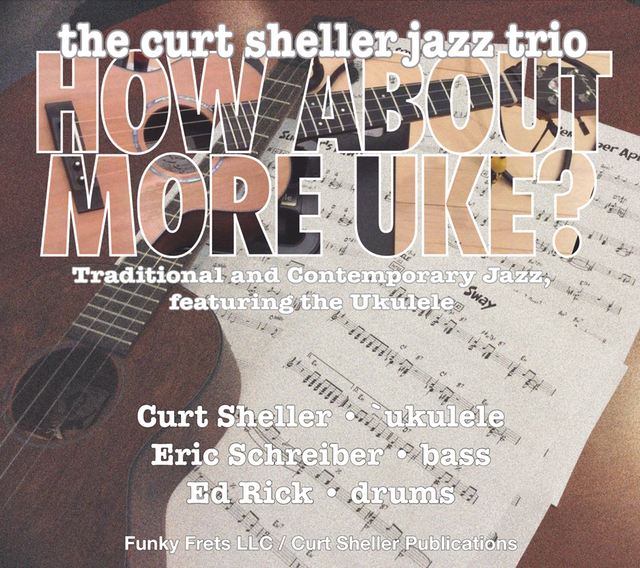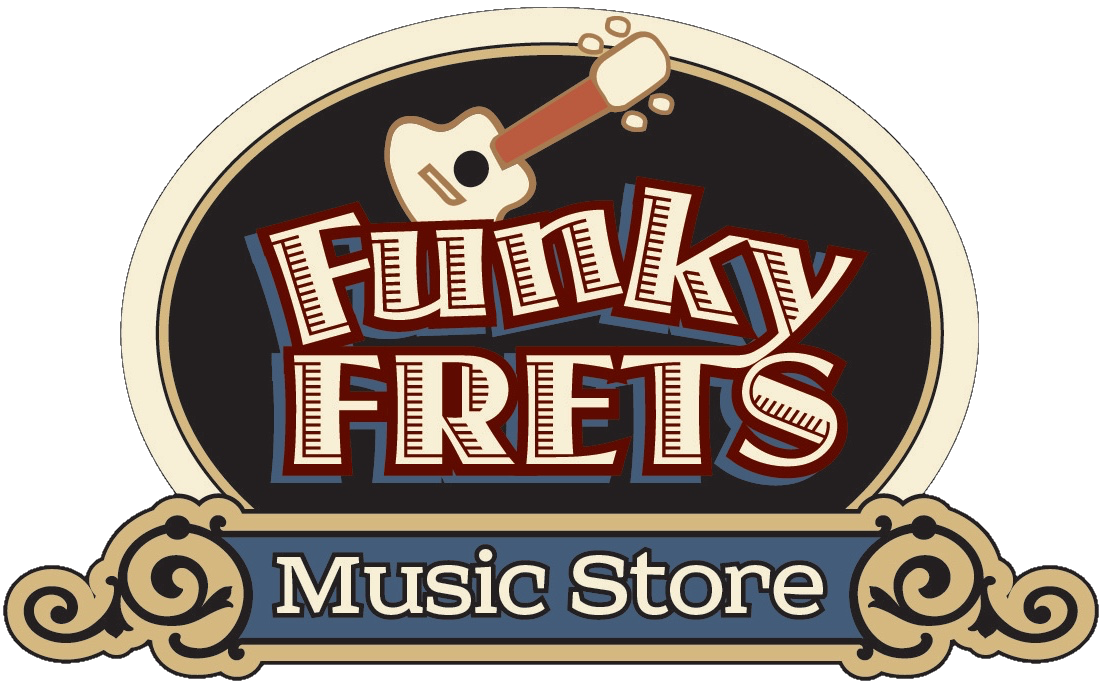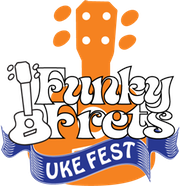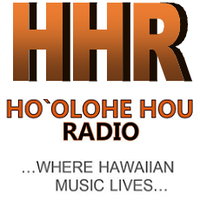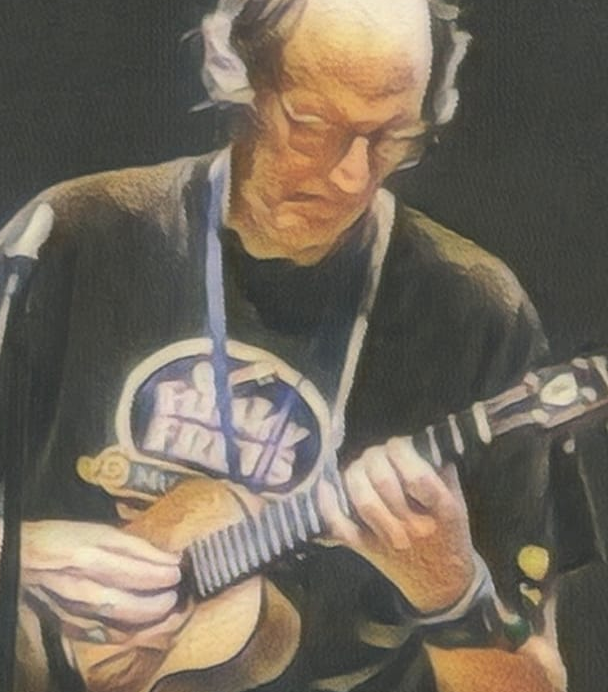AABA
A musical composition/song form with three sections call A and a contrasting section call B . A popular song form. On a leadsheet often indicated by those same letters as Rehearsal Marks.

A Capella
Italian for 'in the style of the chapel', music is a performance by a singer or a singing group without instrumental accompaniment, or a piece intended to be performed in this way.
Accidentals
In music, an accidental is the sharp (♯), flat (♭), and natural (♮) symbols, among others indicating a changing of the pitch of a note higher or lower.
When used in a Key Signature , apply all the affected notes throughout an entire piece, unless canceled by another key signature.
Accidentals, other than the accidentals introduced by the key signature apply to subsequent notes for the remainder of the measure where they occur, unless explicitly changed by another accidental. Once a barline is passed, the accidental ends its effect, except when a note affected by an accidental is tied to the same note across a barline. Subsequent notes at the same staff position in the second or later bars are not affected by the accidental carried through with the tied note. There is some debate that as with a key signature, an accidental applies to ANY of the same note, any octave when introduced — that is what I adhere to.
NOTE FROM CURT: Called Accidentals
— I don' think they're "Accidental", they're more "On-Purposes" ;-).

Double Flat, Lowers a note two semitones or one whole step.
Flat, Lowers a note one semitone or one step.
Natural, Cancels a previous double flat, flat, sharp or double sharp. Return a note to it's nature note or letter (A B C E F or G).
Sharp, Raises a note one semitone or one step.
Double Sharp, Raises a note two semitones or one whole step..
And there is such a thing as triple flats and triple sharps. But if you think doubles are rare, triples are even rarer. I ran across a triple flat when writing up the song The Girl From Ipenema in the key of Db.
Tripple Flat, Lowers a note three semitones.
Triple Sharp, Raises a note three semitones. Quite rare but good to know the symbol when you need it.
Enharmonic Equivalents
Often I (Curt) will use the Enharmonic Equivalent name vs. the theoretically correct name as you have a better chance of getting the correct not played.
MORE INFO: Reading Music on Ukulele - Primer
Add Chords
Add simply means to add a note to the chord. This add can be any note and is commonly a second (add2) or ninth (add9).
Add 2
Any Triad that has a second added to it. An example would be for Cadd2, the second note from the C Major scale where the add2 chord is built from is D.
MORE INFO: Triads - Traditional and Contemporary Triads
Add 9
Any Triad that has a ninth added to it. An example would be for Cadd9, the ninth note from the C Major scale where the add9 chord is built from is D which is also the same letter as the second, the 2. There is no need to make a distinction between add 2 and add 9 on ukulele with it's limited range and fingering issues that would be encounter when tying to get a ninth in which is an octave and a major second above the root of the chord. If you have a bass player playing the root of the chord you add might just be an add9 already.
MORE INFO: Triads - Traditional and Contemporary Triads
Aeolian Scale
A Modal scale whose step pattern is 2, 1, 2, 2, 1, 2, 2.
Based on a Major Scale it's the scale degrees are: 1 2 b3 4 5 b6 b7 8. Aeolian scale contains the same notes as the Natural Minor with the same root. One of the Six Essential Scales.
MORE INFO: Six Essential Ukulele Scales
Alterations
Indicated with a sharp (#) symbol or a plus (+) symbol. When applied to a chord indicates the raising or lowering of the fifth, ninth, eleventh and thirteenth degrees of a chord.
MORE INFO: Chord Alterations
Anacrusis
In music, an Anacrusis (also known as a pickup, or fractional pick-up) is a note or sequence of notes, a motif , which precedes the first downbeat in a bar in a musical phrase.
Anticipation
An anticipation (ANT) occurs when this note is approached by step and then remains the same. It is basically a note of the second chord played early.
Appoggiatura
Appoggiatura (APP), from the Italian appoggiato past participle of appaggiare, to lean on. A musical ornament that consists of an added non-chord note in a melody that is resolved to the chord tone.
Diatonic Appoggiatura — Stressed non chord tone, but IN scale, resolving immediately to a chord tone by major or minor second.
Chromatic Appoggiatura — Stressed non chord tone, NOT in scale, resolving immediately to a chord tone by minor second.
An appoggiatura, is an incomplete neighbor tone approached skip-wise from one chord tones and resolved to another chord tone.
MORE INFO: More in WikipediA
Arrangement
The intro, ending, interlude, order of themes, instruments, parts, solos, backup harmony of a song or composition. It includes all elements that help transform a song from a song to a performance.
MORE INFO: Melody and Chord Tips
MORE INFO: Classic Endings for `Ukulele
MORE INFO: Creating Introductions and Turnarounds for `Ukulele
Arpeggio
The notes of a chord played one after another, from root position. An Inverted Arpeggio is out of root position.


Both of the above Arpeggio examples are Inverted Arpeggios
Arpeggiated
To play or sing (a chord) in arpeggio . To represent (the tones of a chord) as separate notes, as on a staff.
Ascending
A rising direction in music. The term may apply to a scale, melody, arpeggio, sequence, root movement, bass line or a physical direction on an instrument especially a string instrument.
Augmented 7 (+7)
A 4 part chord consisting of 1 3#5 b7 of a Major Scale .
MORE INFO: Core Ukulele Chords - The Big Six
Augmented Chord (+)
A Triad consisting of 1 3 #5 of a Major Scale .
MORE INFO: Triads - Traditional and Contemporary Triads
Augmented 6th
An Augmented 6th chord is a chromatic chord of interval of a major third and an augmented sixth. These are dissonant chords that demand resolution and typically resolve down a semitone, a half step. Usually to a V, a dominant chord.
There are three types of Augmented 6th chords. all are a major third and augments sixth with a different added note: Italian 6th, French 6th, German 6th. Most famous is the German 6th and the Italian the simplest as it only use the three notes and no added notes.
Augmented Large 7 (+L7)
A 4 part chord consisting of 1 3 #5 7 of a Major Scale . The L refers to a large or major seventh. It's a convenient short hand and one letter vs. three. An alternate way to refer to a major seventh.
NOTE: The notation short hand L
for the major seventh of a chord, is a very, very contemporary concept that I learned while studying with Chuck Anderson
who encountered it while studying with the great Dennis Sandole
. For moore info on Dennis Sandole’s Unique Jazz Pedagogy by Thomas Scott McGill
barre
barre
, the old English spelling vs. bar which refers to a measure of music, is used to indicate a placing of a finger across two or more strings. If covering all the strings it's called a full barre and if fewer than all the strings it’s a partial barre. It’s a classical guitar technic used for guitar, ukulele, mandolin and other fretted string instruments regardless of style. In classical guitar notation, there are music symbols for indicating both a full barre, the letter C with option Roman numerals CVII for the fret position and a partial barre using a ¢VII with a line through it like a cent sign. Pretty rare for anything other classical guitar music.
Beat
A single pulse of rhythm. Typically refers to the regular rhythmic pulse felt in a musical passage. This is what musicians and listeners respond to by clapping the hands or tapping their foot.
Beams
Beam Note Groups are beamed according to the beat subdivision f the measure (bar). This makes is less confusing and easier to read. Think if the spacing between words where off and a space was rando-manly placed between syllables of multi-syllable words.
Binary Form
A song writing form using two themes.
Banjo Ukulele, Banjolele
Basically a Ukulele with a "Banjo" body. Produces a bright percussive "banjo" like sound. If you want to be the loudest instrument/player at an acoustic ukulele jams, this is the instrument for you.

MORE INFO: Banjo `Ukuleles
Blues
The blues form is a musical form in which repeating progression of chords mirrors the call and response scheme commonly found in African and African-American music. A famous song writing form using a 12 bar pattern, featuring the I , IV and V chord of any major or minor key. It typically has a single musical theme.
MORE INFO: Six Essential Ukulele Scales
Blues Scale
The hexatonic, or six-note, blues scale consists of the Minor Pentatonic scale plus the ♭5th degree of the original heptatonic scale. This aped note can be spelled as either a ♭5 or a ♯4. I personally do not consider the Blues scale as a separate scale from the Minor Pentatonic. It is simply the Minor Pentatonic scale with a chromatic passing tone (cpt). A major feature of the blues scale is the use of blue notes; however, since blue notes are considered alternative inflections, a blues scale may be considered to not fit the traditional definition of a scale. One of the Six Essential Scales.
MORE INFO: Six Essential Ukulele Scales
Borrowed Chords
See the Modal Interchange glossary entry.
Broken Chord
There are two kinds of broken chord. 1) You played the wrong chord. 2) Playing the notes of a chord as single notes in sequential pattern, melodically vs. harmonically altogether.
Cadence
A a melodic or harmonic sequence at the end of a phrase that give a sense of resolution of completeness. A harmonic cadence is a progression of (at least) two chords that concludes a phrase, section, or piece of music. A rhythmic cadence is a characteristic rhythmic pattern that indicates the end of a phrase.
Common classifications include: (Perfect) Authentic Cadence, Half Cadence, Plagal Cadence, Minor Plagal Cadence/Perfect Plagal Cadence, Deceptive Cadence.
Most cadences conclude with a V or I chord. The V is often a V7
Some cadences convey a complete musical ending like a period (.) in a sentence. Others more of an incomplete musical idea with some more to come, like a comma (,).
- Perfect Authentic Cadence: a V to I in major or minor keys.
- Imperfect Authentic Cadence: slightly weaker with out the full dominant to tonic resolution. V to I in major or minor keys. An Authentic Cadence becomes Imperfect when 1) The tonic is not the root of the chord or, 2) A triad that is substituted for the V that is still functioning an active chord in a dominant role, 3) One or both of the V or I are inversions.
- Half Cadence: The second chord is in the dominant role, I to V , IV to V , II to V are a few of the possibilities.
- Plagal Cadence: Is nearly always a I to V . in a major or minor tonality.
- Deceptive Cadence: If the first chord is a V and the second is not a I , there trying to throw us off and fake us out — Deceptive lot they are.
As you can see there are not a lot of these — but a lot of possible variations.
There is also a notion of a Rhythmic Cadence.
Jazz and popular music include these traditional cadences but often are disguised with substitutions and decorations serving the same harmonic function.
Capo
When used in musical terms an in Italian term meaning the head or beginning. Also, a mechanical clamping device to raise the pitch of the strings of a fretted stringed instrument by shorting the string length.
On a Tenor ukulele you can actually simulate the shorter scale Soprano and Concert ukuleles with a capo.
MORE INFO: Open Position Chords In Any Key
Chord
A Chord, in music, is any harmonic set of three or more notes that is heard as if sounding simultaneously. These need not actually be played together: arpeggios and broken chords may, for many practical and theoretical purposes, constitute chords.
In traditional theory, which forms the foundation of our tonic /dominant harmony, a chord is combination of two or more major and/or minor intervals of a thirds — a triad. These Major, Minor, Diminished, and Augmented triads form the foundation of an overall majority of our common music for the past three centuries.
A chord name is the capital letter A, B, C, D, E, F, or G followed by chord type information. The capital letter can be followed by a sharp ♯ or flat ♭ if needed to indication the proper pitch of the root of the chord. The function of a chord is not part of its name or type.
The chord names that we are familiar with are a modem construct and pretty much applies to chord build in intervals of major and minor thirds. Chords build in other intervals such as fourths, fifths, etc do not have a standard/traditional name.
NOTE — a chord harmonic function needs to be determined before is can be named. Out of a harmonic context a chord can be any number of names.
Chord Progression
A Chord Progression or (changes
) is a harmonic progression, the succession of individual chords and the foundation of harmony in Western musical tradition from the common practice era of Classical music to the 21st century. Chord progressions are the foundation of popular music styles (e.g., pop, rock, folk, blues, country, jazz) and traditional music. Chords are the Harmony part of the Melody, Harmony, and Rhythm trifecta that make up music.
Chord Tones
The individual notes of a chord.
Chord tones and non-chord tones are defined by their membership (or lack of membership) in a chord: The pitches which make up a chord are called chord-tones: any other pitches are called non-chord-tones.
Power Tones: The Root (1) and fifth (5) of major and minor chord types. Color Tones: The Root (1) and third, major (3) or minor (b3) of major and minor chord types.
For the diminished and augmented triads, the fifth (b5, #5) would be considered a color tone. As, without it they don't have their diminished or augmented quality.
The major, minor, diminished, and augments actually refers to an interval , the distance between two notes..
Chord Root
The individual note used as the foundation of the chord, the alphabetical component of the chord name. Roots may be naturals, sharps or flats, using one of the seven letters of the musical alphabet: A B C D E F G.
Chord Species
Identifies one chord from another, its unique internal construction examples are major, minor, diminished, augmented, 7th etc.
MORE INFO: Triads - Traditional and Contemporary Triads
Chord Spelling
The ability to identifying all notes that theoretically belong in a chord. This capability can enhance your ability to craft melodies or improvisations.
MORE INFO: Chord Spelling - Triads
Chord Symbols
There are the capital letter (A B C D E G), accidentals, number, and letters that appear above a line of music and line of lyrics for an accompanist to create their harmonic accompaniment part.
Chromatic
Chromatic most often refers to structures derived from the twelve-note chromatic scale, which consists of all Semitones or Half Steps .
MORE INFO: The Chromatic Scale
Chromatic Scale
The Chromatic Scale is a non-diatonic scale consisting of all half-steps. With each note and equidistant from the previous or next note that is no tonic. The only scale that contains all twelve (12) note of within one octave.
Chromatic Passing Tone (cpt)
A passing tone outside the current scale. It will connect scale tones by half step or one semitone.
Clave
The clave is a rhythmic pattern used as a tool for temporal organization in Cuban music. In Spanish, clave literally means key, clef, code, or keystone. It is present in a variety of genres such as Abakuá music, rumba, conga, son, mambo, salsa, songo, timba and Afro-Cuban jazz. The five-stroke clave pattern represents the structural core of many Cuban rhythms. ( more info (wikiwand) · Clave )
- one of a pair of cylindrical hardwood sticks that are used as a percussion instrument.
- The most common clave pattern used in Cuban popular music is called the son clave, named after the Cuban musical genre of the same name. Clave is the basic period, composed of two rhythmically opposed cells, one antecedent and the other consequent, a 3:2, three-side and two-side. Clave was initially written in two measures of 2/4 in Cuban music. When written this way, each cell or clave half is represented within a single measure.

The 3:2 Clave Pattern
The clave (/ˈklɑːveɪ, kleɪv/; Spanish: [ˈklaβe]) is a rhythmic pattern used as a tool for temporal organization in Cuban music. In Spanish, clave literally means key, clef, code, or keystone. It is present in a variety of genres such as Abakuá music, rumba, conga, son, mambo, salsa, songo, timba and Afro-Cuban jazz. The five-stroke clave pattern represents the structural core of many Cuban rhythms. ( https://en.wikipedia.org/wiki/Clave_(rhythm) more info Wikipedia )
MORE INFO: Learning the Bossa Nova Style
Clef
A Clef is a musical symbol used to indicate the pitch of written notes. Placed on a stave, it indicates the name and pitch of the notes on one of the lines.
Here are a few of the common clefs.

- Treble or G clef — Used for Ukulele, Guitar and the right hand of the piano. Often call the
G
clef as the thecurely
part the sits on the bottom of the five lines, circles theG
note. - Alto & Tenor, movable clefs. Sort of looks like the capital letter
K
and designates theC
note of the staff. - Bass or F clef. The two dots are above and below the
F
note. Used for the Bass and left hand of the piano.
Other clefs include the Neutral
or Percussion clef and the TAB
clef. The Percussion clef is naturally associated with drums and percussion and the TAB clef common with guitar and fretted string instruments.
MORE INFO: Lessons in the General Music Series
Close Position
A chord is in Close Harmony (also called close position or close structure) if its notes within an octave between the top and bottom notes.
Coda
Coda (Italian for "tail", plural code) is a term used in music in a number of different senses, primarily to designate a passage that brings a piece (or a movement) to an end. Technically, it is an expanded cadence. It may be as simple as a few measures, or as complex as an entire section.
Color Chords
Chords which are extensions or variations of functional chords.
Common Practice Period
The term common practice period is the era of tonal system of music. Starting in the middle os the Baroque period and through the Classical and Romantic periods — approx. 1650 to 1900. This is the period when one could apply ROman numeral harmonic analysis of the underlying chords, the harmonic progression.
As usual you can get more information than you would ever need on (wikiwand) · Common Practice Period .
Comping
Comping, short for Accompanying. Too instrumentally accompany
a vocalist or soloist. It's the chords, rhythms, and countermelodies that chordal instruments such as keyboard players (piano or organ), guitar players, ukulele players, or drummers (rhythmically) use to support a musician's improvised solo or melody lines. It is also the action of accompanying, and the left-hand part of a solo pianist.
Having two chordal instruments comp at the same time is difficult to do well.
Note: Find your place/space when working with another chordal instrument.
More information: (wikiwand) · Comping (Jazz)
Composition
Multiple melodies creating chord harmony at points of intersection.
Craft
Any specific set of tools and building blocks used to compose, arrange, accompany or improvise.
Curt Sheller
Ukulele guru and keeper of this amazing, treasure trove of goodies on this site we call, LearningUkulele.com.
MORE INFO: Curt's Personal Web Site: curtsheller.com
Cycle
A keyless harmonic principle characterized by three conditions. 1) a minimum of three consecutive chords 2) the same chord type for each chord 3) equidistant roots from chord to chord.
MORE INFO: Harmonic Analysis - Chord Substitution Principles
Cut Time
Alla breve – also known as cut time or cut common time – is a musical meter notated by the time signature symbol cut time (a C with a vertical line through it), which is the equivalent of 2/2 The term is Italian for "on the breve", originally meaning that the beat was counted on the breve.
Basically, written in 4 and felt in 2.

D. C.
In music notation, Da Capo (Italian: [da kˈkaːpo]) is an Italian musical term that means "from the beginning" (literally, "from the head"). It is often abbreviated as D.C. The term is a directive to repeat the previous part of music, often used to save space, and thus is an easier way of saying to repeat the music from the beginning.
D.C. is typically used with a coda: D.C. al Coda and with a fine: D.C. al fine.
D.S.
In music notation, Dal Segno (Italian pronunciation: [dal ˈseɲɲo], English: /ˌdæl ˈseɪnjoʊ/ or /ˈsɛɡnoʊ/) (often abbreviated D.S.) is used as a navigation marker. From Italian for "from the sign," D.S. appears in sheet music and instructs a musician to repeat a passage starting from the sign shown at right, sometimes called the "segno" in English
Diatonic
Diatonic and Chromatic are terms that used to characterize scales. If a note is in the scale it is diatonic, if not in the scale it is chromatic.
Diatonic (across the tones
most often diatonic refers to musical elements derived from the Modes
and transpositions of the white note scale
, the C Major Scale: C–D–E–F–G–A–B. In some usages it includes all forms of heptatonic scales that are in common use in Western music (the major, and all forms of the minor). (wikiwand) ·
MORE INFO: The Major Scale
Diatonic Passing Tone (dpt)
A passing tone within the current scale. It may connect scale tones by half or whole step.
Diatonic Scale
In music theory, a diatonic scale is any heptatonic (7), note scale that includes five whole steps (whole tones) and two half steps (semitones) in each octave, in which the two half steps are separated from each other by either two or three whole steps, depending on their position in the scale. This pattern ensures that, in a diatonic scale spanning more than one octave, all the half steps are maximally separated from each other (i.e. separated by at least two whole steps).
Diatonic Substitution
The use of the III or VI chord for the I chord and the use of the V, IV, II or VII chord for the V chord.
MORE INFO: Harmonic Analysis - Chord Substitution Principles
Diminished
Diminished, to make smaller or less; reduce or lessen. In the musical sense is refers to the lowering the upper note of a Perfect interval one half step or lowering the upper note of a Major interval one whole step.
Diminished refers to a chord type or an interval. See the Diminished Chord (°) ( next glossary entry below ).
MORE INFO: Understanding Intervals
Diminished Chord (°)
A Triad consisting of 1 b3 b5 of a Major Scale .
MORE INFO: Triads - Traditional and Contemporary Triads
Diminished 7 (°7)
A 4 part chord consisting of 1 b3 b5 bb7 of a Major Scale
. One of the foundation chords of the Core Jazz
Chords – The Big Six
MORE INFO: Core Ukulele Chords - The Big Six
Diminished Large 7, major 7 (°L7)
A 4 part chord consisting of 1 b3 b5 7 of a Major Scale .
Direct Substitution
The use of one chord for another chord which shares the root and harmonic function of the original chord.
MORE INFO: Harmonic Analysis - Chord Substitution Principles
Music Distribution & Digital Distribution
Musescore Courses: The Musician's Guide to Distribution & Digital Distribution • This series is pulled directly from the courses I've created for my university position in Music Business. All of these courses are designed for the everyday musician - amateur or professional - who has little or no knowledge on the topic, but wants to master it.
This class is all about Distribution and Digital Distribution. In other words: How to get your music on Spotify, Apple Music, Tidal, Amazon, and all the hundreds of other streaming services.
Dr. Allen is a university music professor and is a top-rated Udemy instructor - with nearly 100 courses and over 200,000 students.
More information will be added to a dedicated LearningUkulele.com page: Music Distribution
Dominant
Dominant is a harmonic function typically associated with a seventh chord, a major triad with an optional minor third interval added to the chord to form a 4-part chord.
Traditional chord types, based on stacked intervals of thirds (chords built in thirds) are: Major, Minor, Diminished, and Augmented.
A Chord has a name and type information. The name is the root/letter name of the chord, either A, B, C, D, E, F, or G with any associated sharp(s) ♯ or flat(s) ♭. The function of a chord is NOT part of the chord name. A chord's function is only determined as a result of a Harmonic Analysis of how a given chord is being used in a sequence of chords, i.e., chord progression.. We don't say "D Secondary Dominant Seventh", "C Tonic Seventh", "F Sub-Dominant Seventh", etc.
Dominant Scale
A scale whose step pattern is 2, 2, 1, 2, 2, 1, 2. Based on a Major scale the scale degrees are: 1 2 3 4 5 6 b7 8. This is also know as the Mixolydian Scale Mode . One of the Six Essential Scales.
Dominant Seventh
Dominant refers to a chord's function with in a chord progression, typically the V chord in Tonic/Dominant Harmony which happens to be our common major and minor keys. The most common seventh chord is built on the fifth scale degree, the dominant, of a diatonic scale.Dominant iIS a d function NOT a chord type.
A Dominant Seventh
chord is a major triad with a b7. Initially a no-harmonic tone aped to a triad. A Dominant Seventh chord contains two dissonant intervals, one between the third and seventh of the chord and the other between the root and the seventh. Both demand resolution from the active
, very active dominant to a passive
chord, typical the tonic/ I
chord or direct substitute. Dominant is a harmonic function and NOT actually part of the chord name.
One of the foundation chords of the Core Jazz
Chords – The Big Six
MORE INFO: Dominant Seventh Chords?
Dorian scale
A modal scale whose step pattern is 2, 1, 2, 2, 2, 1.
Based on a 1 b3 b5 7 of a Major Scale the scale degrees are: 1 b2 3 4 b5 6 b7 8. Sometimes referred to as the Minor scale. One of the Six Essential Scales.
MORE INFO: Six Essential Ukulele Scales
The Dot
A Dot, placed right after a note head increase the note one half its original value. A second dot increases the value of the first dot one half its value. A dot can also be used for rests.
Double Stops
A double stop is the technique of playing two notes simultaneously on a multi-stringed instrument. This term is borrowed from the violin string family of instruments.
Dyad
In music, a dyad (less commonly, diad) is a set of two notes or pitches that, in particular contexts, may imply a chord.
Dyads can be classified by the interval between the notes. For example, the interval between C and E is a major third, which can imply a C major chord, made up of the notes C, E and G. When the pitches of a dyad occur in succession, they form a melodic interval. When they occur simultaneously, they form a harmonic interval.
Dynamics
The soft and loud of music along with their gradations.
The Dynamic Quality is controlled primary by the right-hand. The right-hand can control the dynamic range and volume. This and rhythmic considerations are what creates exciting music.
- piano ( p ) — soft
- forte ( f ) — loud
- double piano ( pp ) — softer
- double forte ( ff ) — louder
- pianissimo ( ppp ) — very soft
- fortissimo ( fff ) — very loud
- mezzo piano ( mp ) — medium soft
- mezzo forte ( mf ) — medium loud
- crescendo ( cresc ) — begin softly and gradually increase the volume
- diminuendo ( dim ) — begin loudly and gradually decrease the volume
- piano forte ( pf ) — begin softly and suddenly increase the volume
- forte piano ( fp ) — begin loudly and suddenly decease the volume
- accent > — hit one note louder than another
Echappée (Escape Tone)
An escape tone (ET) or echappée is a particular type of unaccented incomplete neighbor tone that is approached stepwise from a chord tone and resolved by a skip/leap in the opposite direction back to the harmony.
Effects
Electronic processing gear used to shape the sound of recorded music Examples are reverb, chorus, distortion, echo, flange etc. For guitar players it's those array pf little pedals at their feet.
Engineering
The actual recording, mixing and mastering skills used in transforming a performance into a finished recording.
Expansion Substitution
The use of a different chord in addition to the original chord.
MORE INFO: Harmonic Analysis - Chord Substitution Principles
Equal Temperament
An equal temperament is a musical temperament, or a system of tuning, in which every pair of adjacent notes has an identical frequency ratio. As pitch is perceived roughly as the logarithm of frequency, this means that the perceived "distance" from every note to its nearest neighbor is the same for every note in the system.
Equal Tempered Tuning (12TET)
An equal temperament is a musical temperament, or a system of tuning, in which every pair of adjacent notes has an identical frequency ratio. As pitch is perceived roughly as the logarithm of frequency, this means that the perceived "distance" from every note to its nearest neighbor is the same for every note in the system. This tuning's focus is for melodies to sound in tune regardless of the key and sacrifices chords being slightly our of tune.
In classical music and Western music in general, the most common tuning system since the 18th century has been Twelve-Tone Equal Temperament (also known as 12 equal temperament, 12-TET or 12-ET; informally abbreviated to twelve equal), which divides the octave into equal 12 parts. That resulting smallest interval, 1⁄12 the width of an octave, is called a Semitone or Half Step . In Western countries the term equal temperament, without qualification, generally means 12-TET. What this means that the distance between the Root and fifth in one key is the same distance in all other keys. This allows use to play in any key without retuning.
See Just Intonation for a tuning that focuses on chords being in tune and melodies are slightly out of tine.
Extensions
A term that refers to the extended / upper partial chord tones of a chord. The 9th, 11th and 13th of chords.
Fake Book
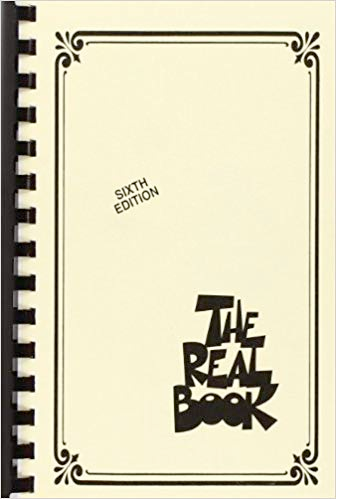
A Fake Book is a collection of songs in Lead Sheet form. A Fake book typically only shows the melody and chords for a song only. This is called a lead sheet and a musician is responsible for creating their own arrangement for the song. Long ago this was called ”faking” a song.
For a Jazz musician the most famous fake book is the Real Book .
Feel
An identifiable pulse and motion usually created by the drummer and bass player. Examples are 2 feel, swing, rock, jazz waltz, bossa, samba, ska etc.
Fediverse
The fediverse The fediverse (a portmanteau of "federation" and "universe") is an ensemble of social networks which can communicate with each other, while remaining independent platforms. Users on different social networks and websites can send and receive updates from others across the network.
Nearly all fediverse platforms are free and open-source software. (wikiwand) · Fediverse
Figured-Bass
Figured-Bass is/was a system of indicating the harmony/chord for a accompanist to play. It was developed during the baroque period (1600–1750) of music. The accompanist, typically the keyboard player, performer was given a bass line an a set of symbols used to indicate the chord voicings to use. Sort of like our modern day chord symbols that convey chord type information.
Figured Bass Notation is the numeral and symbols that appear above or below a bass note. The number indicate the interval(s) above the root bass note for the accompaniment. Rarely used in modern music.
In modern, non-classical music this has been replaced with Chord Symbols .
Figured bass was the shorthand of the eighteenth century. Modern Popular-music symbols, modern construct where the performer is expected to improvise the specific details.
Fine
Italian for the end. Can be used with D.C. and D.S.
First Ending

A transitional part of a song that typically connects the first A Theme to its repeat.
Flat
In music, flat (Italian bemolle for "soft B") means "lower in pitch". Flat is the opposite of sharp, which is a raising of pitch. In musical notation, flat means lower in pitch by one semitone (half step)
, notated using the symbol ♭ which is derived from a stylized lowercase 'b'.
A flat is used in Key Signatures. A flat is also one the the Accidentials (♯ ♭ ♮) used to alter a pitch/note.
Functional Chords
Chords of three or four part harmony that form the basis of standard and contemporary song writing.
Form
The structure of a song organized into sections based on its harmonic and melodic structure.
- AAB - A Binary song form showing an alternate sequence of two themes.
- AABA - A thirty-two-bar form, often called AABA from the musical form or order in which its melodies occur, also ballad form, is common in Tin Pan Alley songs and later popular music including rock, pop and jazz. Famous examples include: Satin Doll, Misty, The Girl from Ipanema, I Got Rhythm, Great Balls of Fire, Surfer Girl, and countless other.
- AABAC - A common Tertiary theme sequence.
- AABBC - An alternate sequence of Tertiary themes.
- AABC - A second form of the three theme sequence.
- ABAB - A third Binary form using alternating themes.
- ABABC - A third form of Tertiary , three section structure.
MORE INFO: Harmonic Analysis - Chord Substitution Principles
George Formby
George Formby, OBE (born George Hoy Booth; 26 May 1904 – 6 March 1961) was an English actor, singer-songwriter and comedian who became known to a worldwide audience through his films of the 1930s and 1940s. On stage, screen and record he sang light, comical songs, usually playing the ukulele or banjolele , and became the UK's highest-paid entertainer. George Formby
Four on the Floor
Four on the Floor is playing all four (4) beats with the bass drum pedal: reinforces the walking bass rhythm — steady quarter notes. Also, can be applied to the ukulele and guitar as playing chord as all quarter notes.
Gig (Gigue)
A dance
. Gigue or giga is a lively baroque dance originating from the English jig. A lively dance movement (as of a suite) having compound triple rhythm and composed in fugal style. This is the origins of gig
. Modern usage refers to having performance to do. Or, a bag, as in gigbag
for yor instrument.
The Great American Songbook
According to the Great American Songbook Foundation: The Great American Songbook
is the canon of the most important and influential American popular songs and jazz standards from the early 20th century that have stood the test of time in their life and legacy. Often referred to as "American Standards", the songs published during the Golden Age of this genre include those popular and enduring tunes from the 1920s to the 1950s that were created for Broadway theatre, musical theatre, and Hollywood musical film. (more info and song lists on WikipediA
)
Grand Staff
A Grand Staff is made up of treble and bass staffs.
Groove
A synonym for feel. As in Get you Groove on!
. Rhythm is a main ingredient of a groove
.
Half Diminished 7 (Ø7)
A 4 part chord consisting of 1 b3 b5 b7. One of the foundation chords of the Core Jazz
Chords – The Big Six
MORE INFO: Harmonic Analysis - Chord Substitution Principles
Harmony
Harmony is the use of simultaneous pitches (tones, notes), or chords. The study of harmony involves chords and their construction and chord progressions and the principles of connection that govern them.
MORE INFO: Harmonic Analysis - Chord Substitution Principles
These are some of the recommendation from us, LearningUkulele.com for exploring Harmony
.
Harmony & Theory: Further Reading
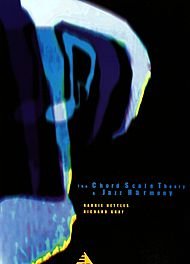
The Chord Scale Theory & Jazz Harmony
Published: 2015
Barrie Nettles, Richard Graf — Jazz harmony, as taught at the Berklee College of Music is based on the so called Chord Scale Theory. This method - further developed - is now available as a comprehensive textbook for the first time. Emerged from practice and designed for practical use, it provides theoretical knowledge necessary for improvisation, composing, and arranging. This comprehensive textbook is a must for beginners, intermediate or advanced students.
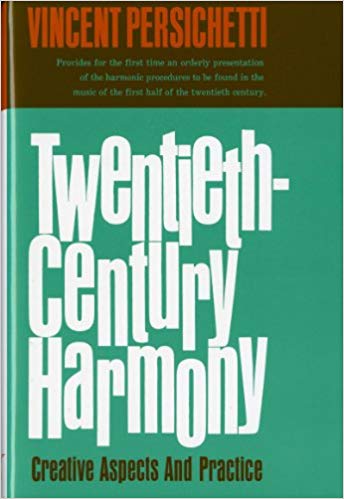
Twentieth-Century Harmony: Creative Aspects and Practice
Published: 1961
Vincent Ludwig Persichetti (June 6, 1915 – August 14, 1987) was an American composer, teacher, and pianist. An important musical educator and writer, he was known for his integration of various new ideas in musical composition into his own work and teaching, as well as for training many noted composers in composition at the Juilliard School.
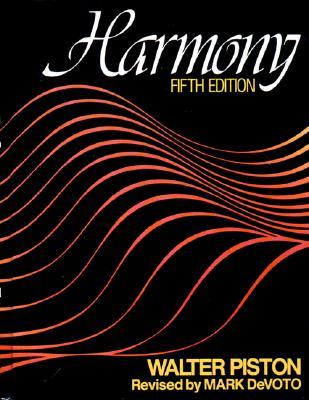
Harmony
Published: 1941
Walter Hamor Piston, Jr. (January 20, 1894 – November 12, 1976), was an American composer of classical music, music theorist, and professor of music at Harvard University.
Piston wrote four books on the technical aspects of music theory which are considered to be classics in their respective fields: Principles of Harmonic Analysis, Counterpoint, Orchestration, and Harmony. The last of these introduced for the first time in theoretical literature several important new concepts that Piston had developed in his approach to music theory, notably the concept of harmonic rhythm, and the secondary dominant.

The Jazz Theory Book
Published: 1995
Mark Levine — Endorsed by Jamey Aebersold, James Moody, Dave Liebman, and others, The Jazz Theory Book presents all the information any student of jazz needs in an easy-to-understand, yet thorough, manner. For intermediate to advanced players, and written by one of the acknowledged masters of jazz, it is used by universities around the world.
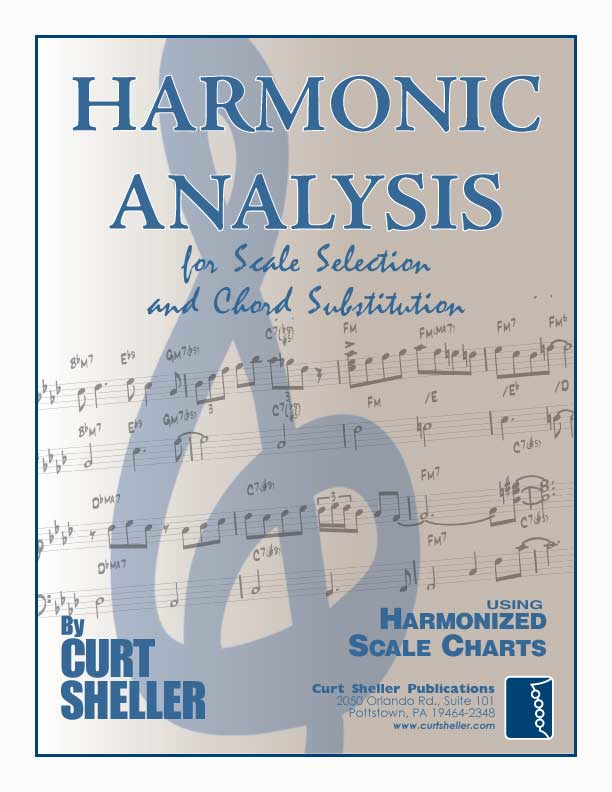
Harmonic Analysis for Scale Selection and Chord Substitution
Published: 2003
Curt Sheller — Harmonic Analysis is the understanding of the functional sequence of chords. It is the process used to analyze the harmonic structure of a progression, song or composition. This analysis is then used to make scale selections for improvisation and chord substitution.
Look for an new edition 2023 with popular references for the examples.
You can't go wrong with have any or all of these books in your music library. I have all of these and naturally mine.
Curt
Hertz
Hertz (Hz), are number of cycles or vibrations per second, The the higher the number, the higher the pitch. Hertz are measured by counting the number of cycles per second. This is how the common clip-on tuners is able to determine what note you are playin, buy counting the vibrations.
Hertz are cycles per second, or rate of vibration. The more hertz, the higher the pitch. You measure hertz by counting the number of cycles per second. Hertz are used in tuners to calibrate your tuner (set the standard that you use for tuning).
II-V-I
The most common resolving chord module in standards and jazz. A basic example would be in the key of C major using Triads : Dm G C.
MORE INFO: Harmonic Analysis - Chord Substitution Principles
Interval
An Interval is the distance between two notes. An interval has a name and a type. Intervals can be played as one note (melodic) or two notes (harmonic) at a time, ascending or descending. Simple and Compound Intervals are taken from a major scale. Chromatic intervals are NOT taken from a major scale. They are derived from the Diatonic intervals.
The distance part of an interval can be determined by counting the lines and space from the bottom note to the top note.
MORE INFO: Understanding Intervals
Imagination
The abstract source of musical ideas.
Internal Modulation
A term from used in harmonic analysis. It refers to a temporary key change without a key signature change. It implies the eventual return of the original key.
MORE INFO: Harmonic Analysis - Chord Substitution Principles
Ionian scale
A modal scale whose step pattern is 2, 2, 1, 2, 2, 2, 1. This is the Major scale starting on the same root. By numbering each note of the scale 1 2 3 4 5 6 7 8 you can use the Major Scale for comparison and deriving other scales. One of the Six Essential Scales.
MORE INFO: Six Essential Ukulele Scales
Just Intonation Tuning
Just Intonation (JT) or pure intonation is the tuning of musical intervals as whole number ratios (such as 3:2 or 4:3) of frequencies. Any interval tuned in this way is called a just interval. Just intervals (and chords created by combining them) consist of members of a single harmonic series of a (lower) implied fundamental.
Just Intonation creates smooth chords and melodies that are slightly out of tune.
The most common tuning in our Western Music is Equal Temperament which focuses on tuning to enhance melodies and chords are a bit out of tune.
Key
In music theory, the Key of a piece is the group of pitches, or scale, that forms the basis of a music composition in classical, Western art, and Western pop music.
Keys
A key signature is a summary of the sharps or flats in a Major or it's relative Natural Minor scale. This series of lessons covers ALL 15 major and relative minor keys with their primary and secondary chords as well as sample common chord progressions.
MORE INFO: Key Signatures
Key Signatures
A key signature is a summary of the sharps or flats in a Major or it's relative Natural Minor scale. This series of lessons covers ALL 15 major and relative minor keys with their primary and secondary chords as well as sample common chord progressions.
MORE INFO: Key Signatures
Lead Sheet
A Lead Sheet is a form of musical notation that specifies the essential elements of a popular song: the melody, lyrics, and harmony. The melody is written in modern Western music notation, the lyric is written as text below the staff and the harmony is specified with chord symbols above the staff.
The lead sheet does not describe the chord voicings, voice leading, bass line or other aspects of the accompaniment. These are specified later by an arranger or improvised by a performer or rhythm section, and are considered aspects of the arrangement or performance of a song, rather than a part of the song itself.
Commercially published and available Sheet music is a Lead Sheet.
Leading Tone
The Leading Tone refers to the seventh scale degree/note of a major scale a major seventh above the tonic.
A Leading-tone triad is a triad built on the seventh scale degree in a major key, while a leading-tone seventh chord is a seventh chord built on the seventh scale degree. This is a diminished triad or as a 4-part chord a half-diminished sevenths chords. This chord, although rare typically functions as a dominant chord in tonic dominant harmony.
Leap Recovery
A melodic device which suggests that a melody reverses its direction after a leap.
Leap
A melodic device in which the distance between two consecutive notes is 2 and 1/2 steps (perfect fourth) or more. Usually followed by a Leap Recovery with the next note in the opposite direction. Unless the leap was part of an arpeggio (chord tones).
Legato
In musical notation the Italian word legato (literally meaning "tied together") indicates that musical notes are played or sung smoothly and connected. That is, in transitioning from note to note, there should be no intervening silence. Legato technique is required for slurred performance, but unlike slurring (as that term is interpreted for some instruments), legato does not forbid re articulation. In standard notation legato is indicated either with the word legato itself, or by a slur (a curved line) under the notes that are to be joined in one legato group. Legato, like staccato, is a kind of articulation. There is an intermediate articulation called either mezzo staccato or non-legato.
Locrian scale
A modal scale whose step pattern is 1, 2, 2, 1, 2, 2, 2. Based on a Major Scale the scale degrees are: 1 b2 b3 4 b5 b6 b7 8. Locrian is a diminished type scale.
MORE INFO: Harmonic Analysis - Modes Harmonized Chord Charts
Lydian Chromatic Concept
The Lydian Chromatic Concept of Tonal Organization is a 1953 jazz music theory book written by George Russell. The book is the founding text of the Lydian Chromatic Concept (LCC), or Lydian Chromatic Theory (LCT). Russell's work was that all music is based on the tonal gravity of the Lydian mode.
George Russel believed that the Dominant Function, V to I , Dominant to Tonic resolution was the driving force behind all harmonic motion in our western music. He also believed that the Lydian scale, which can be build by on a Tonic by stacking perfect fifths. C G D A E B F♯ * G♯(A♭) E♭(D♯), B♭(A#), F, and D♭(C#). *The C♯(D♭) was George's comprise by moving this note out of the sequence to the end of the his sequence
George Russell's theory was a big influence on modal jazz. Think the best selling Miles Davis Kind of Blue album — the best selling jazz album of all-time. It had a big influence on John Coltrane.
Interval-wise have (based on the major scale): 1 5 2 3 7 ♯4 (lydian) * ♭6 ♭3 ♮7 ♮4. This is arranged the order of tonal gravity according to the tonic.
This concept allowed jazz musician to break out of the, mainly chord tone, set chord approach to soloing before the 1950s. Ushering in a the Modern Jazz era.
The Lydian Scale is a great second choice scale for situations where the Major scale is the first choices. The ♯4 is actually less dissonant the the Perfect Fourth.
Note: A good general guide line to know if a note is going to be dissonant is: Any note one half step above a chord tone is going to be dissonant. A note one half step below is slightly less dissonant. Think EF and BC in the C Major Scale: C D E F G A B C`.
Hang on F when there is an E note in the chord and you are guaranteed to clash. The ♯4 is a better option.
Lydian Scale
A modal scale whose step pattern is 2, 2, 2, 1, 2, 2, 1. Based on a Major Scale the scale degrees are: 1 2 3 #4 5 6 7 8. Lydian is a major type scale
MORE INFO: Harmonic Analysis - Modes Harmonized Chord Charts
Major scale
A diatonic scale whose step pattern is 2, 2, 1, 2, 2, 2, 1. By numbering each note of the scale 1 2 3 4 5 6 7 8 you can use the major scale for comparison and deriving other scales.
MORE INFO: The Major Scale
Major 7 (maj7)
A 4 part chord consisting of 1 3 5 7 of a Major Scale
. One of the foundation chords of the Core Jazz
Chords – The Big Six
MORE INFO: Core Ukulele Chords - The Big Six
Major Chord
A triad consisting of 1 3 5 of a Major Scale .
MORE INFO: Triads - Traditional and Contemporary Triads
Mediant
The third note of a Diatonic scale.
Melodic Contour
A graphic representation of a melody created by connecting the successive notes of a melody with a line.
Melodic Minor Scale
The Melodic Minor scale is the same as the natural minor with the exception that the sixth and seventh tones are raised by a semitone (half step) when the scale is ascending. While some composers, notably Mozart, have used this interval to advantage in melodic composition, other composers, having felt it to be an awkward leap, particularly in vocal music, considered a whole step between these two scale degrees more conducive to smooth melody writing, so either the sixth scale degree was raised or the seventh flattened.
Meter
Repeated pattern of strong and week beats. Strongly suggesting a repeated pattern of pulses .
Minor Pentatonic Scale
A Pentatonic scale is a musical scale with five notes per octave, in contrast to the heptatonic scale, which has seven notes per octave (such as the major scale and minor scale. A Minor Pentatonic scale is a 1 b3 4 5 b7 8 of a Major Scale or a 1 3 4 5 7 8 of Aeolian or Dorian/ scales .
Minor 6 (m6)
A 4 part chord consisting of 1 b3 5 6 of a Major Scale .
Minor 7 (m7)
A 4 part chord consisting of 1 b3 5 b7 of a Major Scale
. One of the foundation chords of the Core Jazz
Chords – The Big Six
MORE INFO: Core Ukulele Chords - The Big Six
Minor Chord
A triad consisting of 1 b3 5 of a Major Scale .
MORE INFO: Triads - Traditional and Contemporary Triads
Minor Large 7 (mL7)
A 4 part chord consisting of 1 b3 5 7 of a Major Scale
. The L stands for Large or Major Seventh. One of the foundation chords of the Core Jazz
Chords – The Big Six
MORE INFO: Core Ukulele Chords - The Big Six
Mixolydian Scale
A modal scale whose step pattern is 2, 2, 1, 2, 2, 1, 2. Based on a Major Scale the scale degrees are: 1 2 3 4 5 6 b7 8. Mixolydian is a major type scale. Notice there is only a one note, scale degree difference between the Major/Ionian and Mixolydian/Dominant scales. You can reuse alot of the work you might have already done with the major scale and simply flat the seventh.
MORE INFO: Six Essential Ukulele Scales
Modes
A mode is a type of musical scale coupled with a set of characteristic melodic behaviors. Musical modes have been a part of western musical thought since the Miple Ages, and were inspired by the theory of ancient Greek music. the modern modes are: Dorian , Phrygian , Lydian , Mixolydian , Aeolian , and Ionian .
Modal Interchange
Modal Interchange (Modal Mixture, Borrowed Chords) is temporarily borrowing chords from a parallel tonality or mode that shares the same root. These borrowed chords originate from the major or minor parallel modes, including their respective harmonic and melodic minor, as well as symmetrical scales sharing the same root. You can borrow from any parallel scale or mode.
It typically is support of a melody.
These chords are brief enough to no imply a modulation to a different key. These modal interchanges are different from Secondary Dominant chords.
The original key should be clearly established before using these chords, and not enough to create a modulation to the borrowed tonality/key.
A few famous examples are: A Day In The Life (The Beatles) ( D Dm ), Wake Me Up When September Ends (Green Day ( C Cm ), Ev'ry Time We Say Goodbye (by Cole Porter) ( IV IVm ). Light My Fire (The Doors) Am F♯m
Links & Resources
Modular
Any concept that can be broken down into small units. Modular is a self-contained unit or item, as of furniture, that can be combined or interchanged with others like it to create different shapes or designs. In music this is how the Modular Phonetic Rhythm by Chuck Anderson is applies.
Modular Phonetic Rhythm
A system of learning rhythm developed by Chuck Anderson.
Modulation
A change of tonal center. A modulation can be supen, prepared, a temporary modulation or an actual modulation.
MORE INFO: Harmonic Analysis - Chord Substitution Principles
Mono
One
Mono Song Form
A songwriting form with one musical theme. It usually has multiple verses of lyrics. The 12 bar blues is the most famous mono theme form.
Movable Chords
Sometimes called barre
(Old English spelling) chords, these chords venture beyond the third fret.
MORE INFO: Basic Movable Form Chords
Motif
In music, a motif (also motive) is a short musical phrase, a recurring figure, musical fragment, or succession of notes that has some special importance in or is characteristic of a composition/song: The motive is the smallest structural unit possessing thematic identity.
Non-Harmonic Tones
Harmonic Tones are the chord tones: the roots, thirds, fifths, etc. of a chord.
These Non-harmonic Tones are the non-chord tones that add the emotional qualities that take music places.
Non-harmonic tones can be active, passive, dissonant or, constant depending on context.
The Rhythmic Placement is one of distinction of the various non-harmonic tones. Accented and Unaccented — Accented is on the beat and unaccented is off the beat. On the beat is naturally stronger and off the beat is not and can often go unnoticed.
Common unaccented non-harmonic tones are the unaccented (off-beat) passing tone, unaccented neighboring tone, escape tone, and anticipation
- Passing Tone (PT): [step]
- Neighboring Tone (PT): [step]
- Escape Tone (ET) [step, skip]: Occurs on unaccented non-harmonic tones.
- Appoggiatura (APP) [skip, step]:
- Suspension(SUS) [common tone, step]:
- Retardation(RE)) [common tone, step]:
- Anticipation(ANC) [step, common tone]:
Neapolitan Sixth
A Neapolitan 6th chord is a major chord built on the lowered second scale degree, a flatted Supertonic chord. Can be notated as a bII6.
Neighbor Tone (NT)
A Neighbor Tone (NT) or Auxiliary Note (AUX) is a non harmonic tone one scale step above or below another tone that return to the first tone.
Non Chord Tone
A melodic note not contained within the current chord.
Notation
Any written language used to communicate musical concepts. TAB or tablature is a form of music notation typically used by guitar players.
MORE INFO: Lessons in the General Music Series
Octave
The distance of eight consecutive Diatonic scale tones. The eighth note of a scale or the chord built on that note.
To distinguish one pitch of the same letter from the same lower or higher pitch with the same letter (note name). A number cab be used to indicate the octave. Middle C is C4. Lower and higher octave get the number of that octave (0 1 2 3 4 5 6 7 8). Theoretically it can go lower or higher. The 0..8 is the ranges of the piano.
MORE INFO: Lessons in the General Music Series
Open Position
Open Position typically refers to the open strings, frets one, tho, three and four on a fretted string instrument such as the Ukulele. You here the term used when referring to basic chords, i.e.: An Open Position C Chord.
MORE INFO: Open Position Chords
Ornament
In music, ornaments or embellishments are musical flourishes—typically, added notes—that are not essential to carry the overall line of the melody (or harmony), but serve instead to decorate or "ornament" that line (or harmony), provide added interest and variety, and give the performer the opportunity to add expressiveness to a song or piece. Many ornaments are performed as "fast notes" around a central, main note. (from Wikipedia)
Types of ornaments/embellishments include: Trill, Mordent, Turn, Appoggiatura , Acciaccatura, Glissando, and Slide.
Overtone Series
A Harmonic Series or Overtone Series is the sequence of frequencies, musical tones, or pure tones in which each frequency is an integer multiple of a fundamental. See the Wikipedia: Harmonic series (music) listing for too much information on this.
Here is the Overtone Series for a C notes as the fundamental: C C` G E G Bb C` D E Gb G Ab Bb B C` C# D ... In intervalic relationship to the Root or fundamental: Root Octave Fifth(+2) Octave Third(-14) Fifth(+2) Flat Seven(-31) and then an Octave again and is goes up the chromatic scale.
Notes in the overtone series vibrate in perfect harmony with the fundamental note. But, are slightly out of tune or off of by the number of cents or difference from Equal Temperament , rounded up or down indicated by the plus (+) and minus(-) number indicated. These between notes are the notes of the common major and minor scales. This allows chord to sound very smooth. However you would have to return you instrument for every new key or modulation.
Parallel Fifth
Parallel Fifths, or Consecutive Fifths are simply an interval of a Perfect Fifth. In the traditional "Common Practice Period" of classical music the parallel fifth was frowned upon. Though used in, and evocative of, various kinds of popular, folk, and medieval music, parallel motion in perfect consonances (P1, P5, P8) is strictly forbipen in species counterpoint instruction (1725–present) and during the common practice period, consecutive fifths were strongly discouraged. This was primarily due to the notion of voice leading in tonal music, in which, "one of the basic goals...is to maintain the relative independence of the individual parts." The perfect intervals (the 4th, 5th and octave) sound 'pure'.
Passing Tone
A Passing Tone (PT) is a scale tone on a weak or upbeat, off-beat, not stressed, that connects two chord tones step-wise by seconds, ascending or descending. A passing tone sits between two chord tones.
Passive Chords
Chords that resolve harmonic tension Typically, the I, II and VI chords of a diatonic key.
MORE INFO: Harmonic Analysis for Scale and Chord Selection
Pentatonic
As in reference to a scale, a Pentatonic scale is a musical scale with five notes per octave, in contrast to the heptatonic scale, which has seven notes per octave (such as the major scale and minor scale).
Phyrgian scale
A modal scale whose step pattern is 1, 2, 2, 1, 2, 2, 2.
Based on a Major Scale it's the scale degrees are: 1 b2 b3 4 5 b6 b7 8.
A Natural Minor / Aeolian with a flat second (b2).
A few songs based on or using the Phrygian scale/mode: Misirlou, Whenever I May Roam, Humble. (from David Bennett Piano )
The Phrygian Mode would have the primary chords of the scale. Songs that are in Phrygian or use elements of the Phrygian sound: Set the Controls for the Heart of the Sun by Pink Floyd, London Calling by The Clash
MORE INFO: Scale and Mode History
Phrase
A phrase is a musical thought which typically ends with a cadence. These phrase are created as an interaction to melody, harmony, and rhythm of the music.
A phrase can be pre-planned or improvised on the spot.
Picardy Third
A Picardy Third (also known as Tierce de Picardie) is a harmonic device. It refers to the use of a major chord of the tonic at the end of a musical section which is either modal or in a minor key. Basically the expected minor resolution is major instead. A common Jazz
harmonization.
The Beatles I'll Be Back
, in minor key with each verse ending on a major chord ... and I love here.
MORE INFO: Harmonic Analysis for Scale and Chord Selection
Pickup Measure
A Pick Up measure. An incomplete measure, based on the time signature, of music a the beginning of a songs or piece of music. A pickup measure is a for of Anacrusis .
Pitch
Pitch is the lowness or highness of a tone, for example the difference between middle C and a higher C. The frequency of the sound waves producing a pitch can be measured precisely, but the perception of pitch is more complex because single notes from natural sources are usually a complex mix of many frequencies.
Pivot Chord
A single chord which is the final chord of one tonal center and is simultaneously the first chord of another tonal center. Serves a double function connecting two tonal centers.
MORE INFO: Harmonic Analysis for Scale and Chord Selection
Power 5
A chord consisting of only roots and perfect fifths. Technically not a chord by the standard chord definition.
Production
All related activities of coordinating the process of recording music, video or putting on a concert or show.
Pulse
This pulse is typically what listeners respond to as they tap their foot or dance along with a piece of music. Even someone not trained in music, can generally sense the pulse and may respond by tapping a foot or clapping. The pulse may be audible or implied. The pulse is not necessarily the fastest or the slowest component of the rhythm, but the one that is perceived as basic.
Pythagoras of Samos
Pythagoras was an ancient Ionian Greek philosopher and the eponymous founder of Pythagoreanism. His political and religious teachings were well known in Magna Graecia and influenced the philosophies of Plato, Aristotle, and, through them, the West in general. Knowledge of his life is clouded by legend, but he appears to have been the son of Mnesarchus, a gem-engraver on the island of Samos.
In antiquity, Pythagoras was credited with many mathematical and scientific discoveries, including the Pythagorean theorem, Pythagorean tuning, the five regular solids, the Theory of Proportions, the sphericity of the Earth, and the identity of the morning and evening stars as the planet Venus. It was said that he was the first man to call hims the first to divide the globe into five climatic zones.
Pythagorean Interval
In musical tuning theory, a Pythagorean interval is a musical interval with frequency ratio equal to a power of two divided by a power of three, or vice versa. For instance, the perfect fifth with ratio 3/2 (equivalent to 31/ 21) and the perfect fourth with ratio 4/3 (equivalent to 22/ 31) are Pythagorean intervals.
This is the basis for our Western music
Pythagorean Tuning
is a system of musical tuning in which the frequency ratios of all intervals are based on the ratio 3:2. This ratio, also known as the pure
perfect fifth, is chosen because it is one of the most consonant and easiest to tune by ear and because of importance attributed to the integer 3. As Novalis put it, The musical proportions seem to me to be particularly correct natural proportions.
Quaver
Needed an entry for Q — so went with the British term for a quarter note.
An eighth note (American) or a quaver (British) is a musical note played for half the value of a quarter note ( crotchet ) and twice that of the sixteenth note ( semiquaver ), which amounts to one quarter the duration of a half note ( minim ), one eighth the duration of whole note ( semibreve ), one sixteenth the duration of a double whole note ( breve ), and one thirty-second the duration of a longa, hence the name.
MORE INFO: Lessons in the General Music Series
Quartal Harmony
Quartal Harmony is the building of harmonic structures built from the intervals of the perfect fourth, the augmented fourth and the diminished fourth. For instance, a three-note quartal chord on C can be built by stacking perfect fourths, C–F–B♭.
Quintal Harmony
Quintal Harmony is harmonic structure preferring the perfect fifth, the augmented fifth and the diminished fifth. For instance, a three-note quintal chord on C can be built by stacking perfect fifths, C–G–D.
Harmony and Chords Built on Other Than Thirds
, Tertian Harmony
Only chords built using thirds / Tertian Harmony are named. Chords built using Secundal, Quartal, Quintal, and or Sixths Harmonies do not have an established naming convention.
Real Book
The Real Book may refer to a number of compilations of lead sheets for jazz standards . It usually refers to the first volume of a series of books transcribed and collated by Berklee College of Music students during the 1970s.
Originally sold illegally, In 2004, music publisher Hal Leonard obtained the rights to most of the tunes contained in the original Real Book and published the first legal edition, calling it the Real Book Sixth Edition in tacit acknowledgment of the five previous illegal versions.
Several of these are available right here on LearningUkulele.com Books
Range
The high and low note of a piece of music. The high and low notes of a melody or a melodic phrase.
Reentrant tuning
A re-entrant tuning is a tuning of a stringed instrument where the strings (or more properly the courses on coursed instruments) are not ordered from the lowest pitch to the highest pitch (or vice versa). A break in an otherwise ascending (or descending) order of string pitches is known as a reentry. Most common re-entrant tunings have only one reentry; In the case of the soprano ukulele, for example, the reentry is between the third and fourth strings, while in the case of the Venezuelan cuatro it is between the first and second strings.

Rehearsal Marks
These are the boxed letter scattered through a piece of music. Used to navigate to specific sections during rehearsal.

This allows the person running the rehearsal to to give verbal directions such as Take from the C section.
. or, A section, second ending.
Also a way of remembering the form of the song. AABA is a very common form.
Re-harmonization
A musical effect created by retaining the original melody while rewriting the original chord progression.
MORE INFO: Harmonic Analysis - Chord Substitution Principles
Relative Minor
The minor key, chord or scale based on the sixth degree of any Major Scale .
MORE INFO: Harmonic Analysis - Chord Substitution Principles
Repetition
The reuse of an identical melody, phrase, chord progression or rhythm.
Replacement Substitution
The use of a different chord instead of the original chord.
MORE INFO: Harmonic Analysis - Chord Substitution Principles
Rhythm
Rhythm is produced by the sequential arrangement of sounds and silences in time. Meter measures music in regular Pulse groupings, called measures or bars. The time signature or meter signature specifies how many beats are in a measure, and which value of written note is counted or felt as a single beat.

By Dbolton - Own work after User:Hyacinth's w:Image:Metric levels.png, CC BY-SA 3.0, Link
MORE INFO: Modular Phonetic Rhythm by Chuck Anderson
Rubato
"Free in the presentation", literally Italian for '"stolen time"' is a musical term referring to expressive and rhythmic freedom by a slight speeding up and then slowing down of the tempo of a piece at the discretion of the soloist or the conductor. Rubato is an expressive shaping of music that is a part of phrasing.
One can distinguish two types of rubato: in one the tempo of the melody is flexible, while the accompaniment is kept in typical regular pulse (yet not rigidly in mechanical fashion; but adjusting to the melody as necessary—see below). Another type affects melody and accompaniment. While it is often associated with music of the Romantic Period, classical performers frequently use rubato for emotional expressiveness in all kinds of works.
Scale
As a sequence of musical notes, collection of pitches in ascending (UP) and descending (DOWN) order. Most commonly, the notes of a scale will belong to a single Key or Tonality , used to conveniently represent part or all of a musical work including melody and/or harmony.
Scale Degree
In music theory, scale degree refers to the position of a particular note in a scale relative to the tonic, the first and main note of the scale from which each octave is assumed to begin. Degrees, 1 2 3 4 etc are useful for indicating the size of intervals and chords, and whether they are major or minor. Examples would include major second (M2), perfect fourth (P4), minor third (m3), diminished fifth (dim5), augmented fifth (aug5).
Scale Degree Names
- 1st, Tonic — Tonal center and the resolution tone. In the movable do solfège system, the tonic note is sung as do. (wikiwand) · more info available on Wikipedia
- 2nd, Supertonic — One scale step (whole step) above ) the tonic. In the movable do solfège system, the supertonic note is sung as re. more info available on Wikipedia
- 3rd, Mediant — Midway between the tonic and the dominant. In the movable do solfège system, the mediant note is sung as mi. While the fifth scale degree is almost always a perfect fifth, the mediant can be a major or minor third. (wikiwand) · more info available on Wikipedia
- 4th, Suddominant • The same distance below the tonic as the dominant is above the tonic – in other words, the tonic is the dominant of the subdominant. Also the note one step below the dominant.[4] In the movable do solfège system, the subdominant note is sung as fa. A subdominant chord followed by a tonic chord produces the plagal cadence. (wikiwand) · more info available on Wikipedia
- 5th, Dominant & The second in command in the scale to the tonic. Creates the most tensions and demands resolution to the tonic. In the movable do solfège system, the dominant note is sung as "So(l)". In music theory, the dominant triad is a major chord, symbolized by the Roman numeral "V" in the major scale. In the natural minor scale, the triad is a minor chord, denoted by "v". In a minor key, the seventh scale degree is raised by a half step (♭ scale degree 7 to ♮ scale degree 7), creating a major chord. (wikiwand) · more info available on Wikipedia
- 6th, Submediant — The lower mediant, halfway between the tonic and lowed subdominant. A third down from the tonic and a sixth up from the tonic. In the movable do solfège system, the submediant is sung as la in a major mode and fa in a minor mode. It is occasionally called superdominant,[3] as the degree above the dominant. This is its normal name (sus-dominante) in French. (wikiwand) · more info available on Wikipedia
- 7th, Leading Tone — Leads melodically to the tonic. A half step below the tonic • One of the most important scale degrees of a major tonality. In the movable do solfège system, the leading-tone is sung as ti. (wikiwand) · more info available on Wikipedia
- 7th, Subtonic — Used to designate the seventh scale degree in the Natural Minor scale (a whole step below the tonic). The subtonic can be contrasted with the leading note, which is a half step below the tonic. In the movable do solfège system, the subtonic note is sung as te (or ta). (wikiwand) · more info available on Wikipedia
Scale Length
Is the distance from the nut to the saddle on a stringed instruments. It is expressed in inches or millimeters.
Second Ending
 A transitional part of a song that typically connects the second theme to the first Theme.
A transitional part of a song that typically connects the second theme to the first Theme.
Secondary Dominant
Basically a Secondary Dominant is a seventh function as a dominant, and not the main dominant of the tonality which resolves to a temporary tonic chord that is part of the original key, a Full Diatonic chord to the key.
MORE INFO: Harmonic Analysis - Partial Diatonic (Secondary Dominant)
Secundal Harmony
Secundal is the quality of a chord made from seconds, and anything related to things constructed from seconds such as counterpoint.
Semitone
A semitone, also called a Half Step or a Half Tone , is the smallest musical Interval commonly used in Western tonal music, and it is considered the most dissonant when sounded harmonically. Think Jaws, Twilight Zone or any secret agent inspired theme.
Sequence
The repetition of musical phrase at different pitch level. A melodic device that uses parallel melodies starting on consecutive scale degrees.
Seventh (7)
A chord designation for a 4 part chord consisting of 1 3 5 b7. Often refereed to as a Dominant Seventh
chord. One of the foundation chords of the Core Jazz
Chords – The Big Six
MORE INFO: Core Ukulele Chords - The Big Six
Sharp
In music, Sharp, dièse (from French), or diesis (from Greek)[a] means, higher in pitch
. Specifically, sharp means higher in pitch by one semitone (half step)
. Sharp is the opposite of flat, which is a lowering of pitch.
A sharp is used in Key Signatures. A sharp is also one the the ccidentials (♯ ♭ ♮) used to alter a pitch/note.
Sixth (6th)
In modern popular music, a sixth chord is any triad with an added sixth above the root as a chord. In classical music is is still called and added sixth chord. A common A chord designation for a 4 part chord consisting of 1 3 5 6.
When a sixths is added to a minor triad it is called a minor sixth and less commonly a minor major sixth.
In 4-part harmony, Jazz
, more often that not the m6 chord is often misnamed and is really function as a II chord, a m7b5 as part of a II V in a minor key. An example would be D9 in the key of E minor followed by a B7. In reality is is a F#m7b5 B7 to either Em or can be part of a Picardy Third.
Slash-Chord
A Slash Chord, Chord Name / Bass Note is where the lowest note of the chord is indicated after the slash (/). This can be ANY note. The piano, guitar and bass or capable of playing the indicate voicing as they actually a a wide range of bass note on their instrument. The bass only has to play the note indicated. For ukulele players you can get this with a triad and the note after the slash as the lowest note in the chord. It is typically used to create chromatic and diatonic movement in the bass voicing of the chord and how it is function harmonically.
A Slash Chord
is not any chord played by this guy ->.
Saul Hudson (born July 23, 1965), better known as Slash, is a British-American guitarist who is best known as the lead guitarist of the American hard rock band Guns N' Roses, with whom he achieved worldwide success in the late 1980s and early 1990s. Slash has received critical acclaim and is considered one of the greatest guitarists in history.
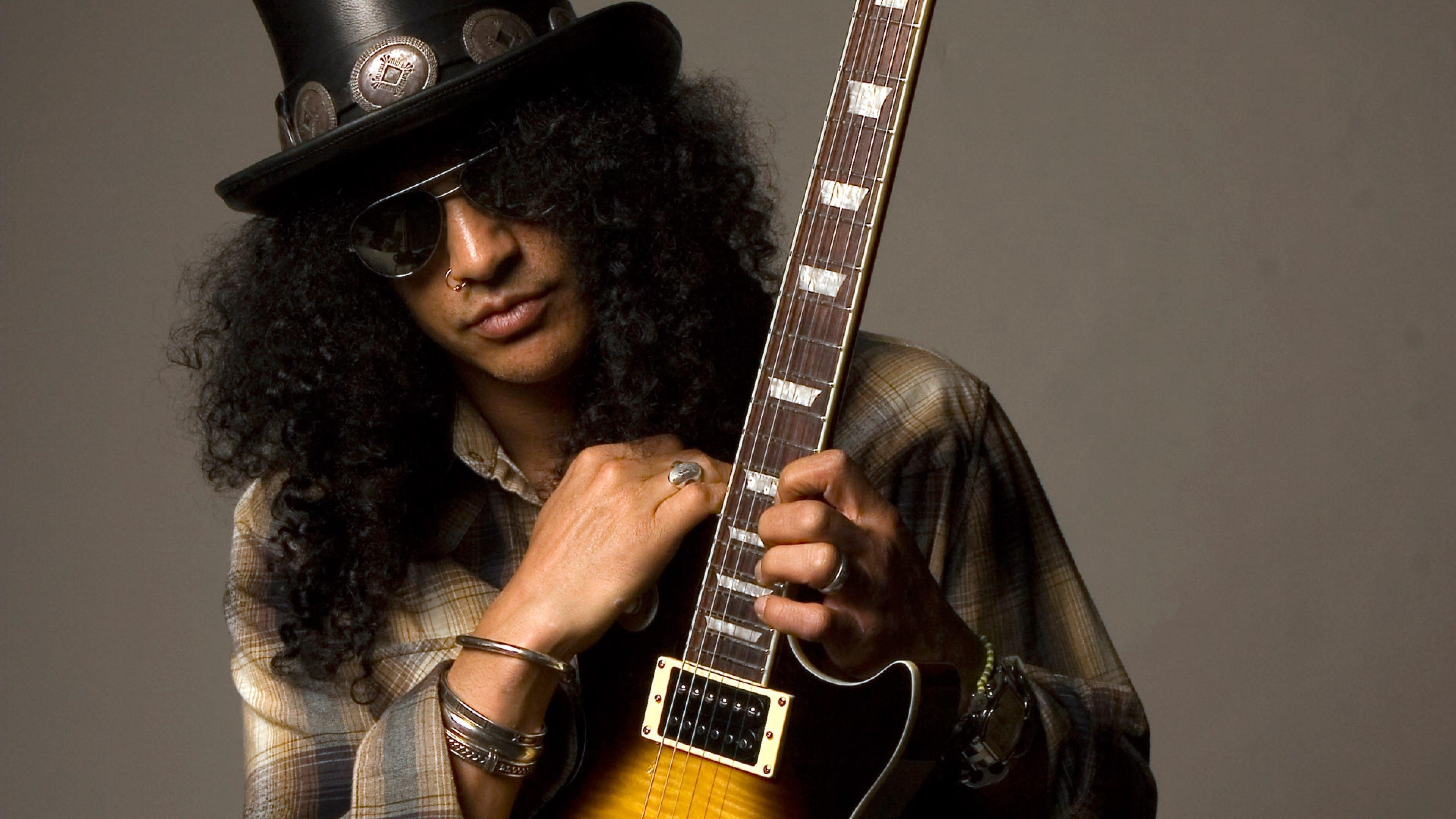
Solfege
A system of melodic organization that uses syllables (DO RE MI FA SOL LA TI DO) to designate pitches. Two common systems are Moveable-DO Solfege and Fixed-DO Solfege.
Song
The basic product of the music industry. A song consists of four elements: 1) title 2) melody 3) chords 4) lyrics (if vocal).
Staccato
Staccato (Italian for detached) is a form of musical articulation. In modern notation it signifies a note of shortened duration, separated from the note that may follow by silence.
Staff
A Staff consists of five horizontal, equally spaced lines.
Steps
In the Diatonic Scale, a step is either a minor second (also called a half step) or a major second (also called whole step), with all Intervals of a minor third or larger being skips. For example, C to D (major second) is a step, whereas C to E (major third) is a skip.
In the major scale or any of its modes, a step will always be a movement of 1 or 2 semitones.
Stress Tone
A series of techniques used to bring attention to a specific. Stress can be applied to a note in the following ways: begin on it, end on it, sustain it, accent it, overplay it, place it on a down beat, embellish it.
Strum
A Strum is the execution of a specific rhythmic pattern, in tempo, in a particular style. Rhythm are in-separately linked to strums. Using the Modular Phonetic Rhythm System developed by Chuck Anderson this series of lessons start with the core four strums all ukulele players use and throughly digs in to the many variations possible.
MORE INFO: Building Your Core Strums for Ukulele
Subdivisions
A note can be subdivied into any number of equal parts. 2,3,4,5,6,7,…
Subdominant
The fourth note of a Diatonic scale or the chord built on that note. It is the same intervalic distance below the tonic as the dominant is above the tonic in other words, the tonic is the dominant of the subdominant. The triad built on the subdominant note is called the subdominant chord.
MORE INFO: Harmonic Analysis - Chord Substitution Principles
Submediant
The sixth note of a Diatonic
scale or the chord built on that note. The mediant is the third note is a scale. Also, called the lower mediant
as it is halfway between the tonic and subdominant.
MORE INFO: Harmonic Analysis - Chord Substitution Principles
Supertonic
The second note of a Diatonic scale or the chord built on that note.
MORE INFO: Harmonic Analysis - Chord Substitution Principles
Suspended, Suspension, sus
A suspended chord (or sus chord) is a musical chord in which the (major or minor) third is omitted and replaced with a perfect fourth or, less commonly, a major second.
The above definition, from Wikipedia, I believe really misses the traditional and historic use of a suspension where you are delaying the inherent tendency of the perfect fourth to resolve to a major third. Transitionally, this resolution almost always happened (downward) fourth the third. It is only in modern times that the resolution doesn't happen. There is no resolution of a Major Second to a third. So, the modern, common sus2 chord where the third is omitted, and a major second is added. This is really just a DYAD of a Root and Perfect Fifth with an added second. e.g., C5add2.
However, when new terms and chord names are introduced that are not based on the principles of Music, i.e., Music Theory. We, still, need to know how to identify what they are really going for. Bottom-line, Wikipedia has to be taken with a Grain of Salt
.
Sustain
To let a note ring out.
Symmetry
Balance in music.
Symbols
Musical Symbols are marks and symbols used since about the 13th century in musical notation of musical scores. Some are used to notate pitch, tempo, metre, duration and articulation of a note or a passage of music. In some cases, symbols provide information about the form of a piece (e.g., how many repeats of a section) or about how to play the note (e.g., with violin family instruments, a note may be bowed or plucked). Some symbols are instrument-specific notation giving the performer information about which finger, hand or foot to use. For a big list see the Wikipida page: List of musical symbols
Technique
Technique is the physical control and coordination needed to play an instrument or sing. It involves position, efficiency of motion and effort, as well as exercises to develop specific physical skills.
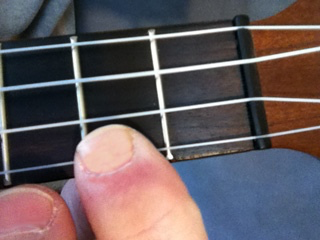
Right behind the fret and less effort required!!!.
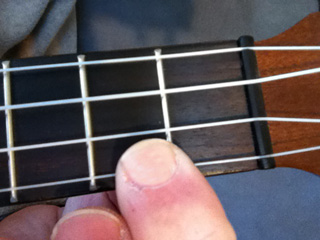
Too far from the fret - TOO much effort required.
Tempo
The tempo of the piece of music is the speed of the Pulse . If a pulse becomes too fast – the tempo – it would become a drone; one that is too slow would be perceived as unconnected sounds.
Tension/Resolution
Tension is created melodically, harmonically or rhythmically. Each element seeks a resting point. That resting point is the resolution.
Tertiary Form
A song writing form using three themes.
Tertiary Harmony
Tertian (Latin: tertianus, of or concerning thirds
) • Tertian Harmony (also called tertiary harmony) principally uses chords based on thirds; the term is typically used to contrast with quartal and quintal harmony which uses chords based on fourths or fifths.
Tetrachord
Traditionally, a tetrachord (Greek: τετράχορδo) is a series of three smaller intervals filling in the interval of a perfect fourth, a 4:3 frequency proportion. In modern usage a tetrachord is any four-note segment of a scale or tone row. ( more info on Wikipedia )
MORE INFO: Exploring Improvisation Using Tetrachords
Theory
The established principle of how music works.
Theory?
Why learn Theory
? Checkout Adam Neely's Why you should learn music theory (Prescriptivism vs Descriptivism)
. Adam articulates it a lot better than I every would.
Tin Pan Alley
Tin Pan Alley was a collection of music publishers and songwriters in New York City that dominated the popular music of the United States in the late 19th and early 20th centuries. It originally referred to a specific place: West 28th Street between Fifth and Sixth Avenues in the Flower District of Manhattan; a plaque (see below) on the sidewalk on 28th Street between Broadway and Sixth commemorates it.
The start of Tin Pan Alley is usually dated to about 1885, when a number of music publishers set up shop in the same district of Manhattan. The end of Tin Pan Alley is less clear cut. Some date it to the start of the Great Depression in the 1930s when the phonograph, radio, and motion pictures supplanted sheet music as the driving force of American popular music, while others consider Tin Pan Alley to have continued into the 1950s when earlier styles of music were upstaged by the rise of rock & roll, which was centered on the Brill Building. Brill Building songwriter Neil Sedaka described his employer as being a natural outgrowth of Tin Pan Alley, in that the older songwriters were still employed in Tin Pan Alley firms while younger songwriters such as Sedaka found work at the Brill Building. (wikiwand) ·
Timbre
Sometimes called "color", or "tone color," allows us to distinguish one instrument from another when both play at the same pitch and volume, a quality of a voice or instrument often described in terms like bright, dull, shrill, etc.
Tonic
In music, the tonic is the first Scale Degree (scale degree 1) of the Diatonic Scale (the first note of a scale) and the tonal center or final resolution tone that is commonly used in the final cadence in tonal (musical key-based) classical music, popular music, and traditional music.
Tonality
Tonalityis the arrangement of pitches and/or chords of a musical work in a hierarchy of perceived relations, stabilities, attractions and directionality.
MORE INFO: Key, Keys, Key Signatures
A central tone, a.k.a. note to which other tones relate and establish a tonality or identity. Tonality is implied through harmonic articulation, through tensions and release or a base chord.
A Chord in isolation can belong to many keys or no key. When used in chord progressions with other chords, it can only belong to in tonality or key. A chord's harmonic function determines its name.
Tonality is established using tones of a scale as chord roots in varying degrees in support of a central tonic. The main support to a tonic is the Dominant Subdominant of a key in balanced support by the medians and sub mediant chords.
Tonic Minor
The minor key, chord or scale based on the root of any Major Scale .
Tremolo
In music, Tremolo, is a trembling effect. There are two types of tremolo. A rapid reiteration of a single note, particularly used on bowed string instruments, by rapidly moving the bow back and forth; plucked strings such as on a harp, and tremolo picking, in which a single note is repeated extremely rapidly with a plectrum (or "pick") on traditionally plucked string instruments such as guitar (although a pick is not necessary to execute a tremolo), mandolin, ukulele, etc. Tremolo picking sustains sound for a longer span. The second is using electronic effects in guitar amplifiers and effects pedals which rapidly turn the volume of a signal up and down, creating a "shuddering" effect. A vocal technique involving a wide or slow vibrato.
Triad
A triad, 'tri' meaning three, is a three note Chord
. In music, a triad is traditionally a set of three notes that can be stacked in thirds.
When stacked in thirds, the triad's members, from lowest pitched tone to highest, are called: the root, the third, the fifth – its interval above the root being a minor third (three semitones) or a major third (four semitones) and the fifth – its interval above the third being a minor third or a major third, hence its interval above the root being a diminished fifth (six semitones), perfect fifth (seven semitones), or augmented fifth (eight semitones).
MORE INFO: Triads - Traditional and Contemporary Triads
Tritone
The best explanation of the Tritone comes from Adam Neeley in his video - The Devil in music (an untold history of the Tritone) .
From Vincent Persichetti's book, 20th Century Harmony (great book - Buy it) regarding the tritone "(The Tri-tone) sounds primarily neutral in Chromatic passage and restless in Diatonic passages."
Tunings
Equal Temperament and Just Intonation are two tuning systems you will run across regarding instrument and tuning systems. The Ukulele uses Equal Temperament where all intervals, regardless of the key are an equal distance from its fundamental note, the tonic.
All tuning system have everything to do with the Harmonic Overtone Series of notes. Overtone Series.
Turnaround
A Turnaround is a passage at the end of a section which leads to the next section. This next section is most often the repetition of the previous section or the entire piece or song. Typically a harmonic chord progression leading to the first chord of the next section or melodic. In Jazz
is is mostlikely soms sort of
V
or
II V
leading to that first chord.
Upper Partials
A term that refers to the extended / upper partial chord tones of a chord. The 9th, 11th and 13th of chords. These are Extensions to the fundamental 4-part chords, often called Jazz
chords.
MORE INFO: Upper Partials and Chord Extensions
Unresolved
A harmonic principle using a temporary implied key change with an eventual return the the original key. The unresolved progression uses active chords only.
MORE INFO: Harmonic Analysis - Chord Substitution Principles
Virtuoso • Virtuosity
A neuromuscular skill that has to be acquired. All new reflexes have to be learned. No one is born with a virtuoso technique. It's helpful to have a good teacher who can play their instrument well and show you how to do things correctly. This will help you avoid bad habits that can hurt your joints, make your music sound bad, or are difficult to get rid of once they become habitual.
Tonic Dominant Harmony • V to I
The strongest resolving progression in western, tonic-dominant music.
MORE INFO: Harmonic Analysis - Chord Substitution Principles
Voice Leading
Voice Leading is a musical technique to smoothly connect chords. It is based on common and non-common tone location.
MORE INFO: The Advanced Guide to Chord Progressions for Ukulele - Volume I
Walking Bass
The bass player plays on all four (4) beats in a bar, not just the 1st and 3rd.
Whole Tone
A major second. This is a musical interval spanning two semitones, and encompassing two adjacent staff positions. For example, the interval from C to D is a major second or whole tone apart, as the note D lies two semitones above C, and the two notes are notated on adjacent staff positions.
Whole Tone Scale
A symmetrical scale with each interval a major second apart. There are only two whole tone scales. The scale step pattern is 1, 1, 1, 1, 1, 1
MORE INFO: Whole Tone Scale for `Ukulele - C Tuning
Why DO I Need All of This Theory?
Music Theory is the established facts and principles of music you can use to explore your instrument and music in general.
Don't confuse Theory with Conjecture , Conjecture is the Opinion or judgment based on inconclusive or incomplete evidence; guesswork. (wordnik.com)
- The more music knowledge you have the more FUN you;ll have.
- The better you get the better the musician you can ply with and Funnerif gets.
- The Funner if get the more you'll want to learn and the better music you'll become attracting even better musicians and the more Fun you'll have..
.png)
Xylophone
Just like Q I didn't have an entry for X - So I went with Xylophone - a musical instrument in the percussion family that consists of wooden bars struck by mallets.
Yellow Book
The Yellow Book —The Yellow Book is the what The Daily Ukulele, 365 Songs for Better Living book by Jim Beloff book is affectionally called. This book is used by a large majority of ukulele groups for the jam sessions and sing-alongs.
You
You — Yes! You. You are reading this so you now have an entry in the LearningUkulele.com glossary of music terms.
Now, get to work on your instrument and music.
Zither
For years, just like Q and X didn't have entries (the do now). I finally went with Zither for the letter Z — The word Zither is a German rendering of the Greek word cithara, from which the modern word "guitar" also derives.
Zombie Chords
The first open position chords most players learn on guitar, ukulele, banjo, mandolin,...
Checkout this video on Open Chords = Zombie Chords? How to Ruin Your Guitar Covers . Applies to the Ukulele as well.
Open Position chords and the same famous strums = Zombie Chords
and bland covers. All for te sake of simplicity which in turn typically ruins the song.
Enjoy, Explore, and Learn!

Acknowledgements
Many of the glossary entries include information from various sources in addition to my (Curt Sheller) personal study and notes over the years and years of research and study. Sources including myself (Curt):
- Curt Sheller — Your LearningUkulele.com host, kume, teacher, fellow musician, … and my years and years of study, research and development as a musician.
- Chuck Anderson • Chuck Anderson is a jazz guitarist, educator, composer, and author, with 10 CDs and 24 books to his credit. Chuck has spent a lifetime researching the art and science of the jazz guitar. I studied with Chuck starting in 1978 and continued for many, many, many years.
- (wikiwand) · — The Free Encyclopedia
- My fellow musicians over the many years of performance ans research.
- The Free Dictionary by Farlex
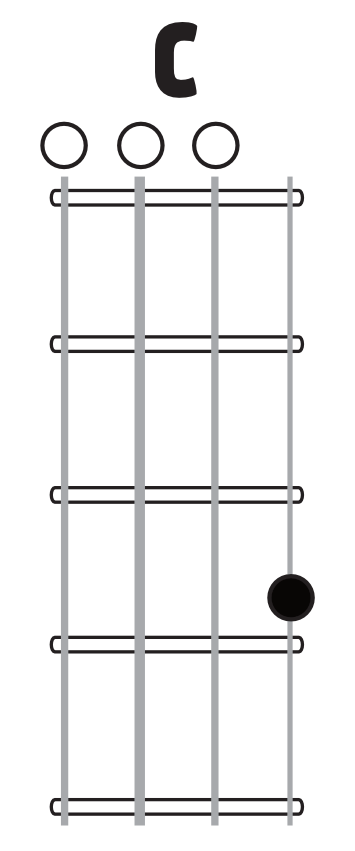

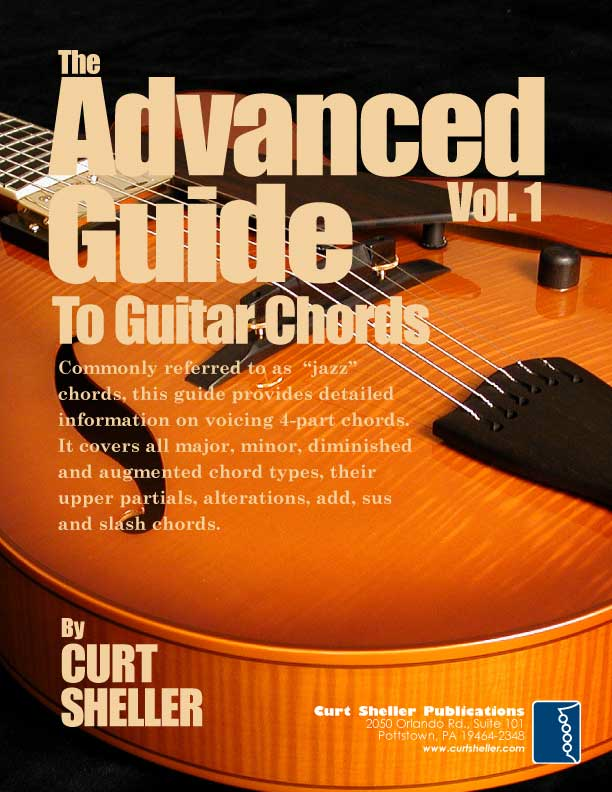
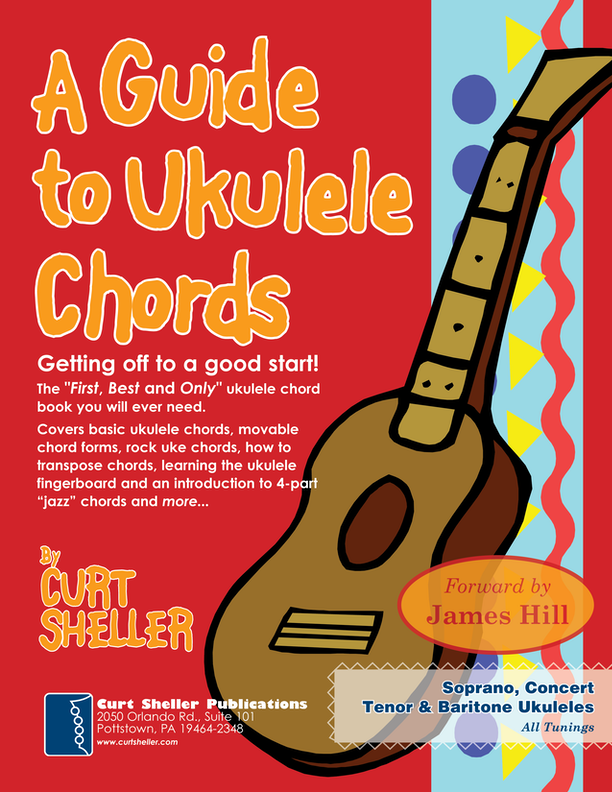
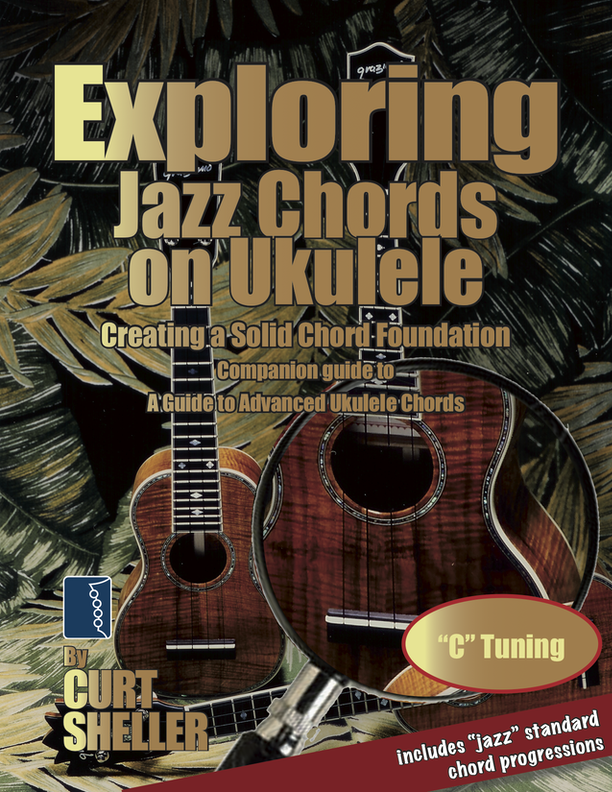
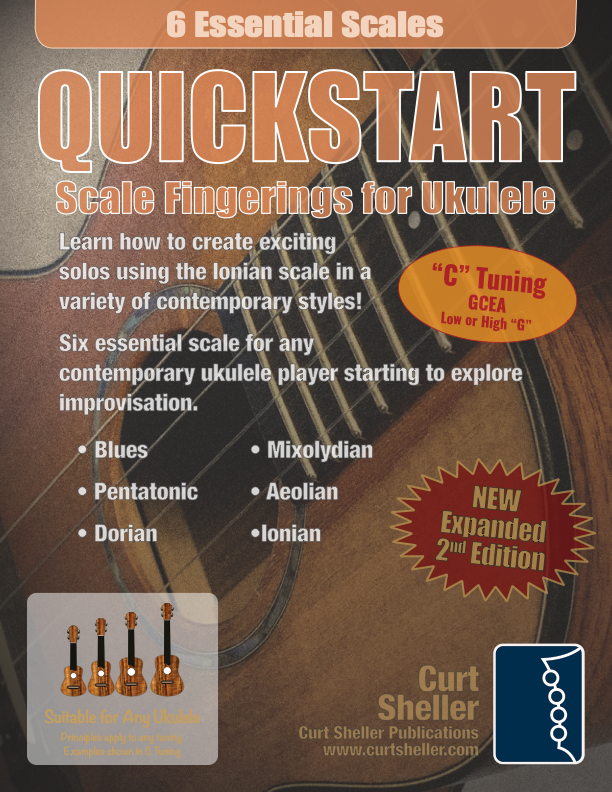
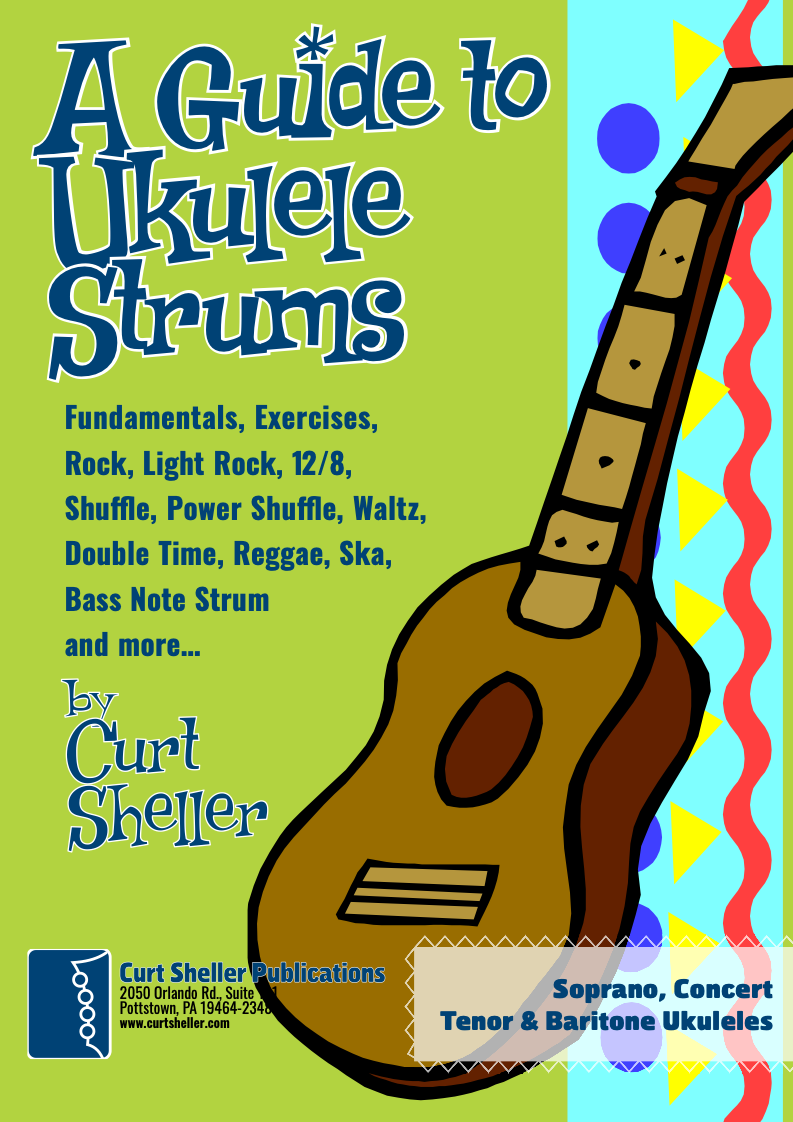
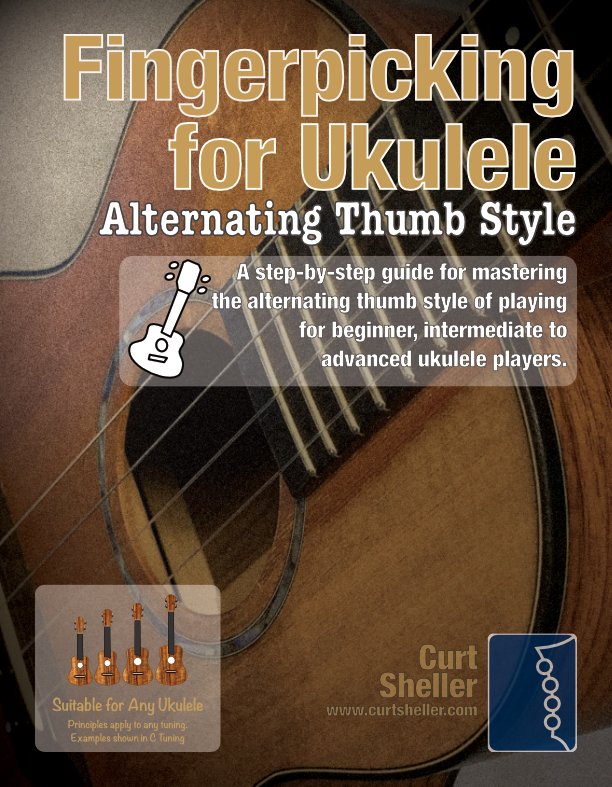

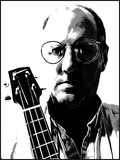


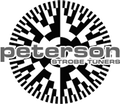

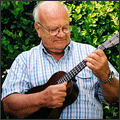






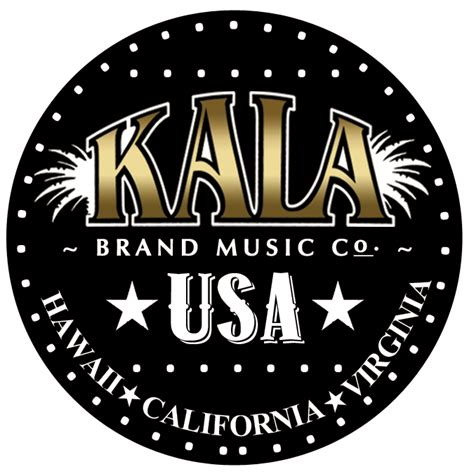


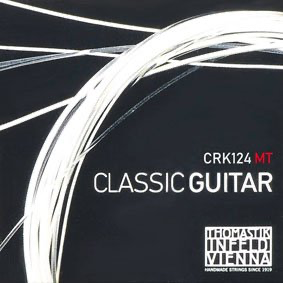
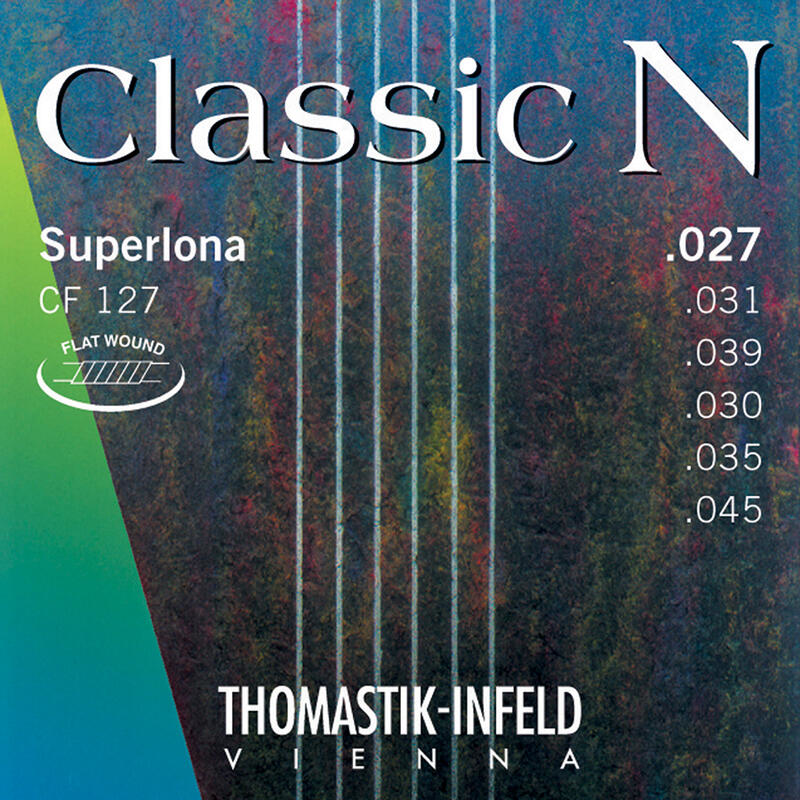
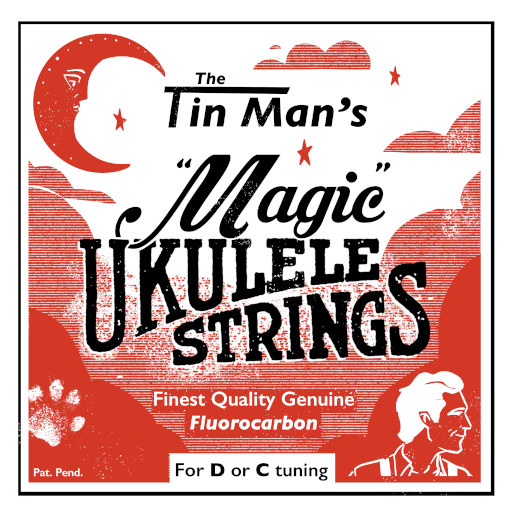
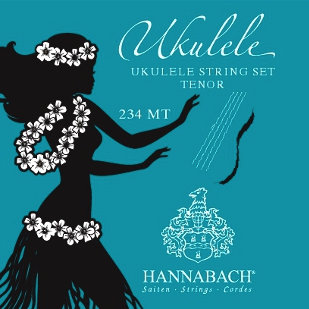
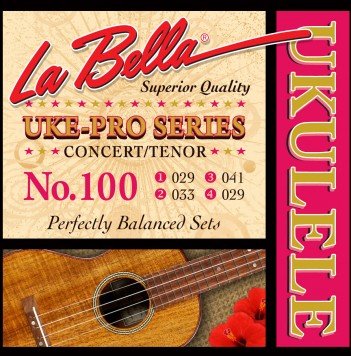
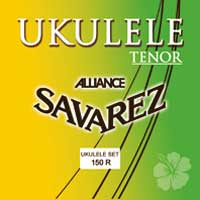






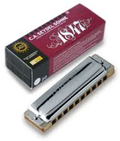
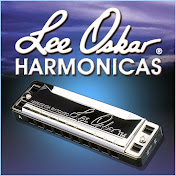





 supportukrainenow.org
supportukrainenow.org
